If you ask how long I’ve lived in Santa Barbara, I’ll say my husband and I moved from New York City five years ago. But the longer version is that we bought a house here in 2013, with the intention of relocating; then his work situation changed, and we committed to five more years in New York. For two years, we spent two weeks here and six weeks there, and I wouldn’t recommend it—on every visit, we felt like caretakers for the house, getting it ready for whoever really lived there, and we put down no roots. But that was when Santa Barbara was new to us, magically so, and I can still remember the thrill of exploring parts of town for the first time. Chief among them was the Funk Zone, where the Lark and Lucky Penny opened the same year.
The neighborhood had the energy I look for wherever I go—not the buzz of nightlife, but the sense that it’s in flux, with industrial, consumer-oriented commercial, and residential all rubbing elbows. The Funk Zone, however, hasn’t followed the trajectory so often seen in larger cities, where a certain type of upper-mid-level brand will pay a premium for cool neighbors. In fact, one could argue that ever since the big shift brought on by the Acme Hospitality complex, change has actually come pretty slowly, or at least slower than I would’ve expected. (It’s knocking at the door, but let’s hold off talking about that….)
A couple of months ago, when I posted about Starbucks opening in the Funk Zone, I caught flak from people who do not consider that stretch of State Street to be the Funk Zone. It’s not funky, granted, but to me, the neighborhood’s borders are clearly State, Cabrillo, Garden, and the 101.
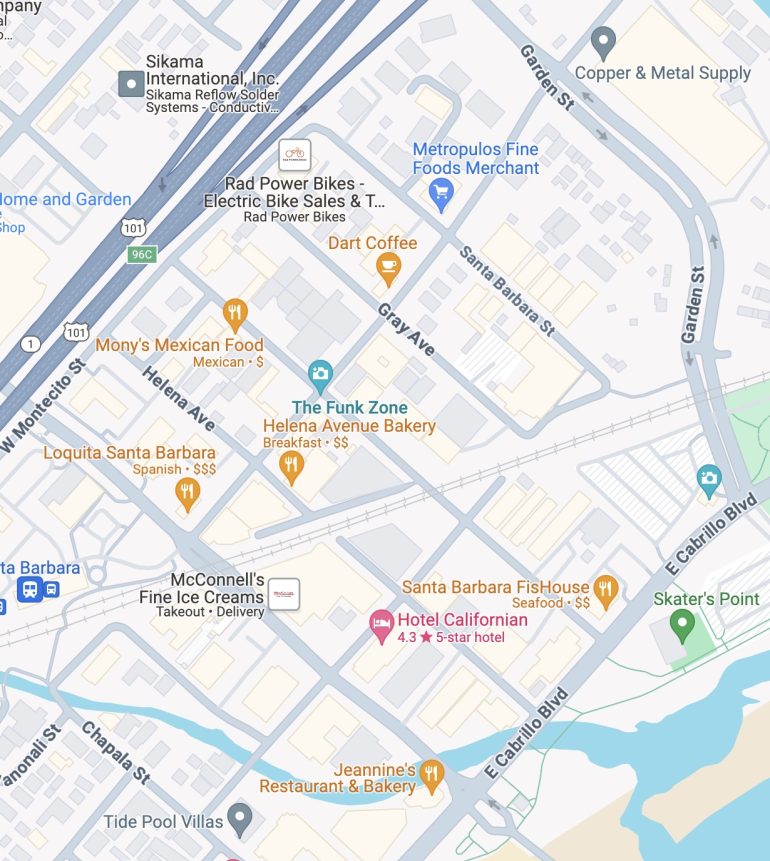 And I can guarantee that people will comment about how the Funk Zone has been ruined for years. I’m going to stay out of that argument, other than to say that the name probably doomed it from the get-go. I imagine “Funk Zone” felt better when it was more of an unofficial designation.
And I can guarantee that people will comment about how the Funk Zone has been ruined for years. I’m going to stay out of that argument, other than to say that the name probably doomed it from the get-go. I imagine “Funk Zone” felt better when it was more of an unofficial designation.
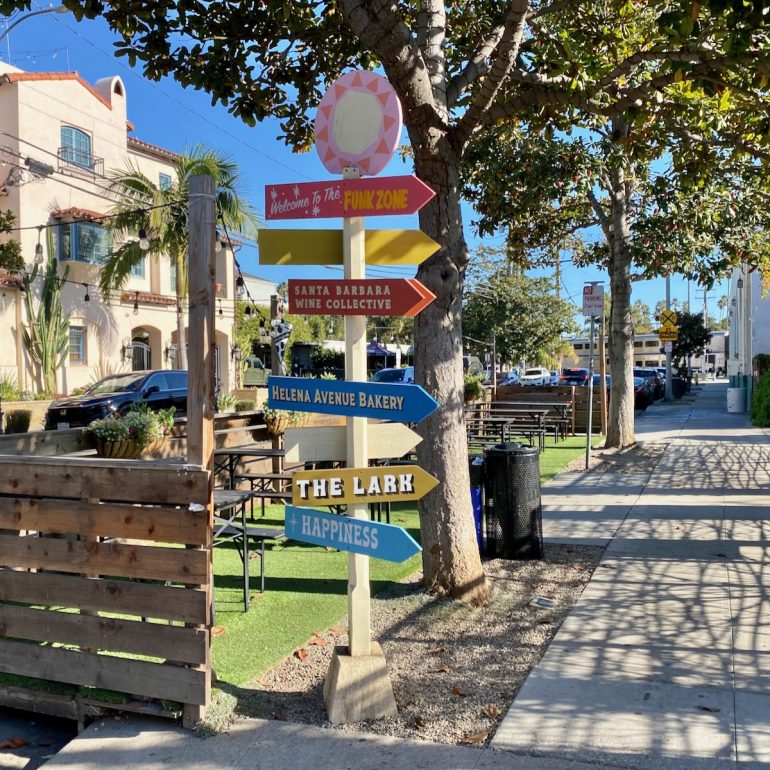
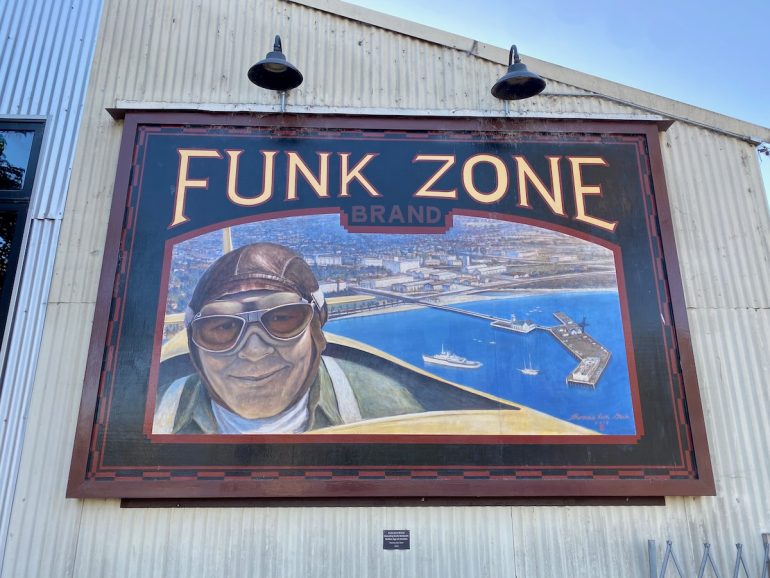
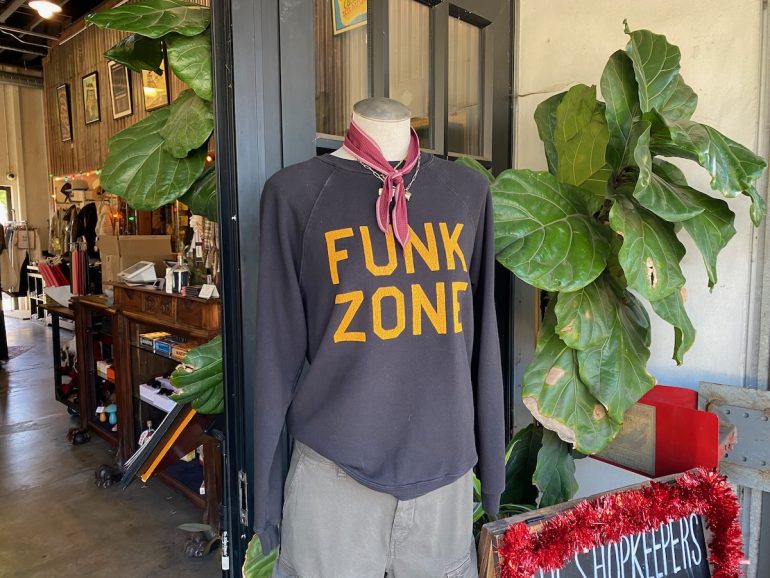
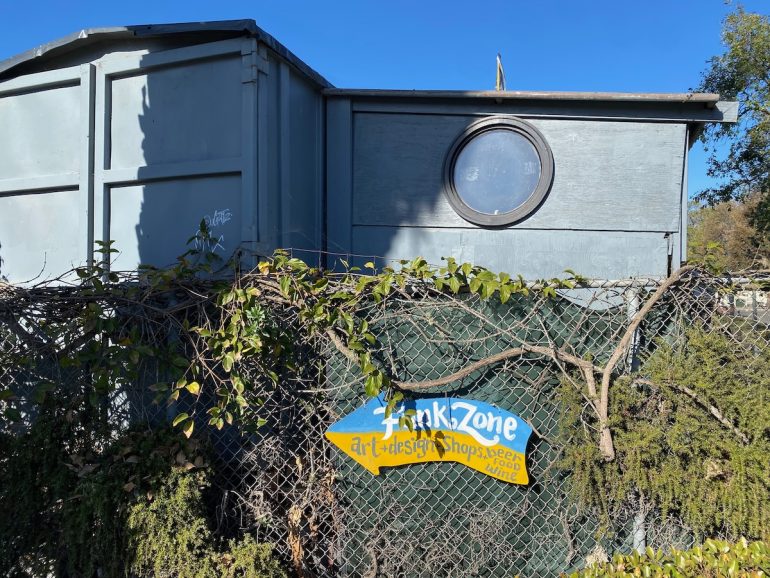 The thing is, there is still funk, particularly in a few places, such as 14 Helena Avenue.
The thing is, there is still funk, particularly in a few places, such as 14 Helena Avenue.
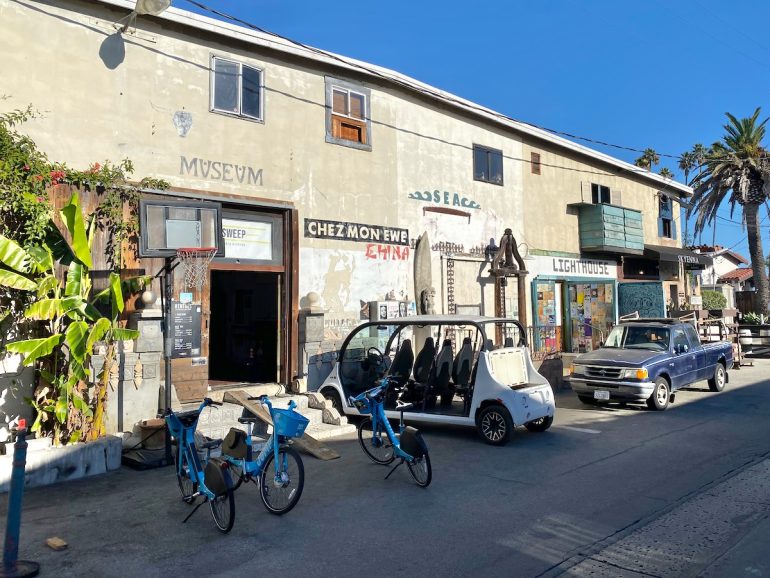
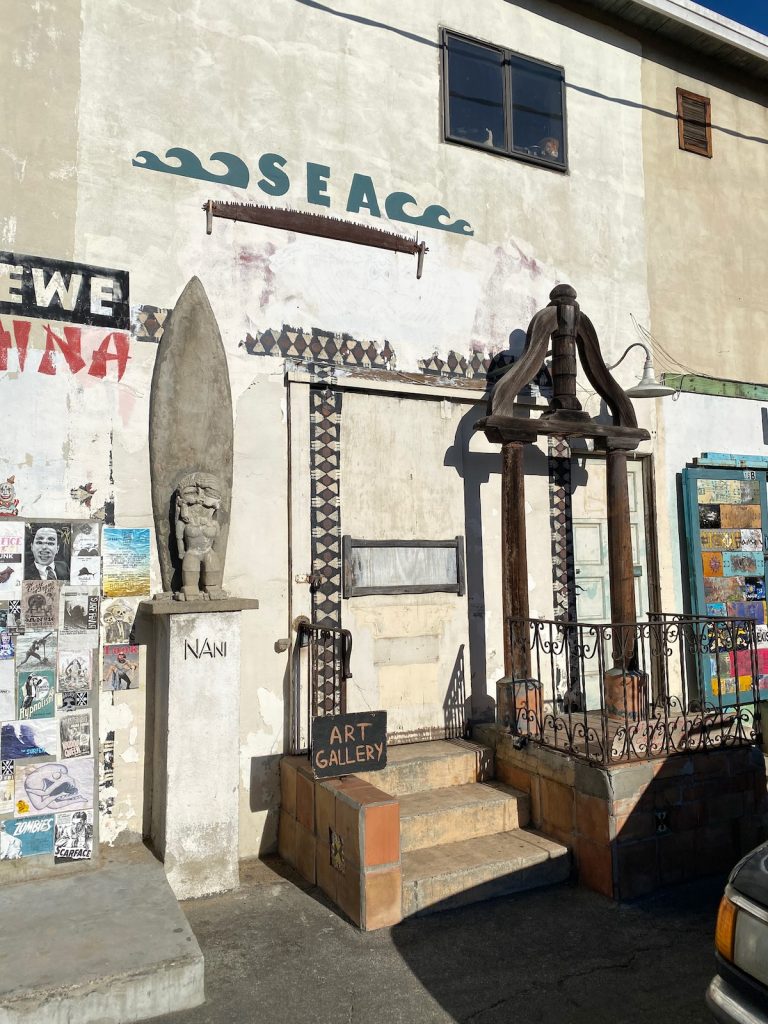
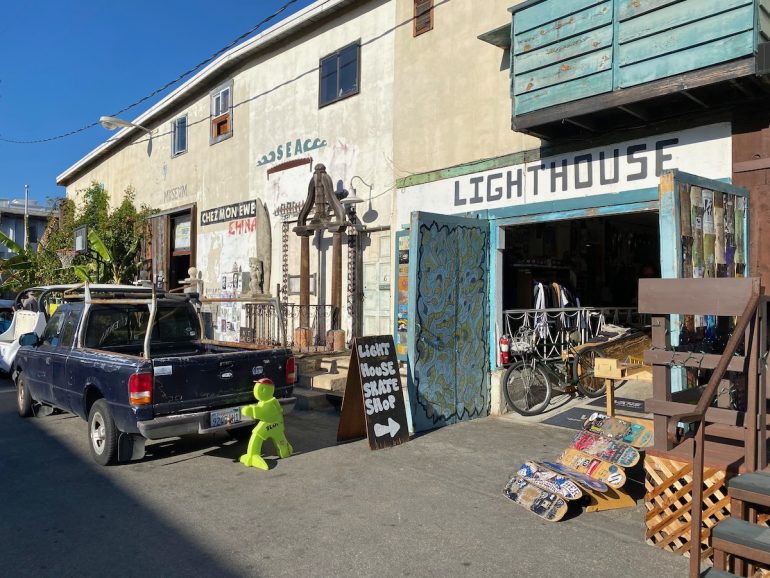 And the shipping-container village along Garden Street.
And the shipping-container village along Garden Street.
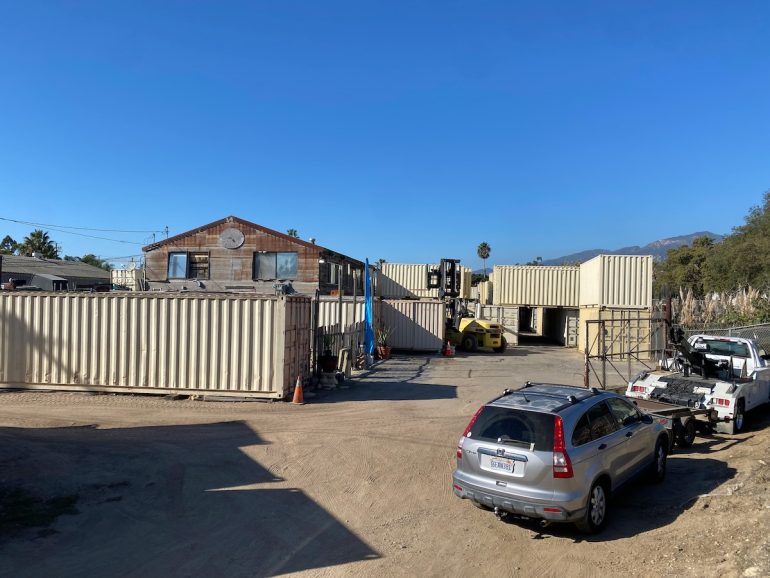
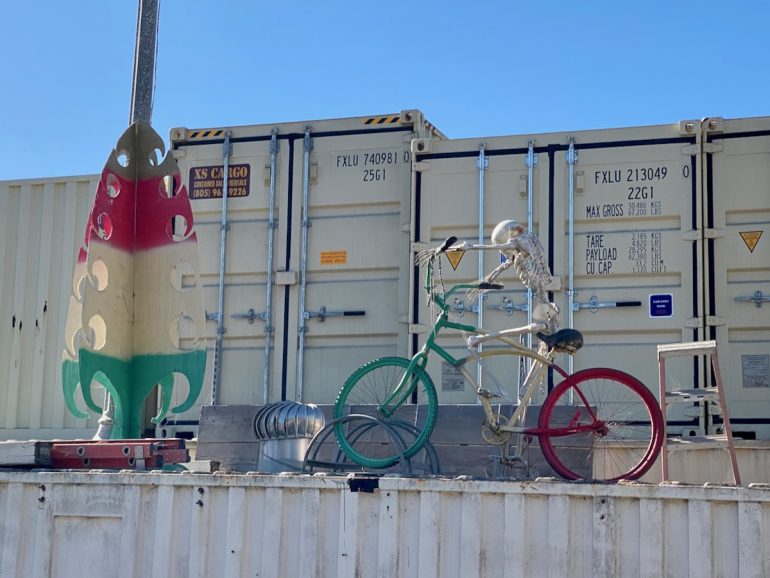 The plethora of street art—commissioned and not—also lends the area quite a bit of flavor.
The plethora of street art—commissioned and not—also lends the area quite a bit of flavor.
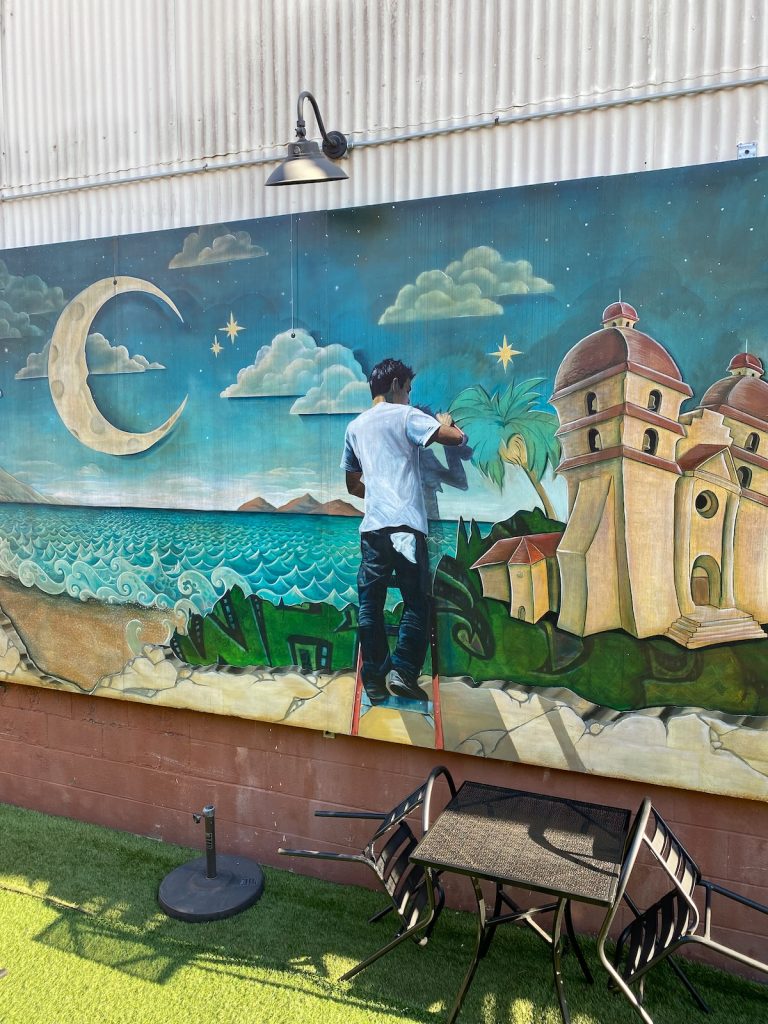

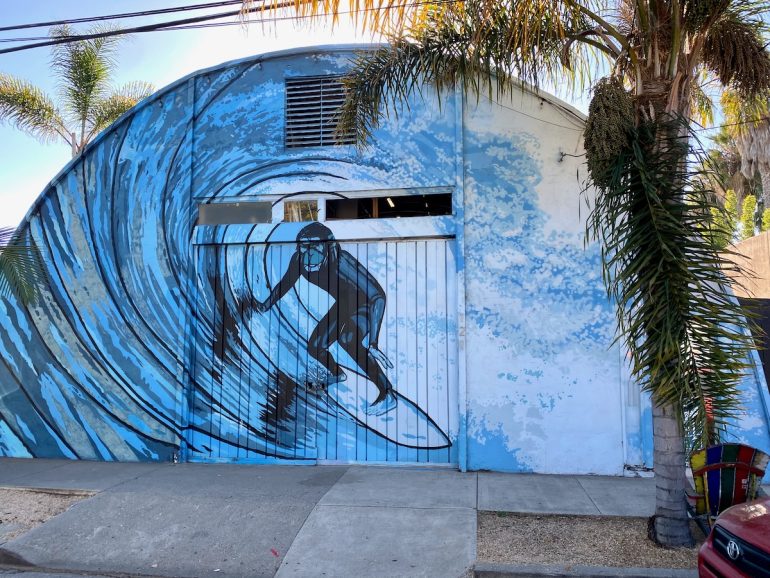
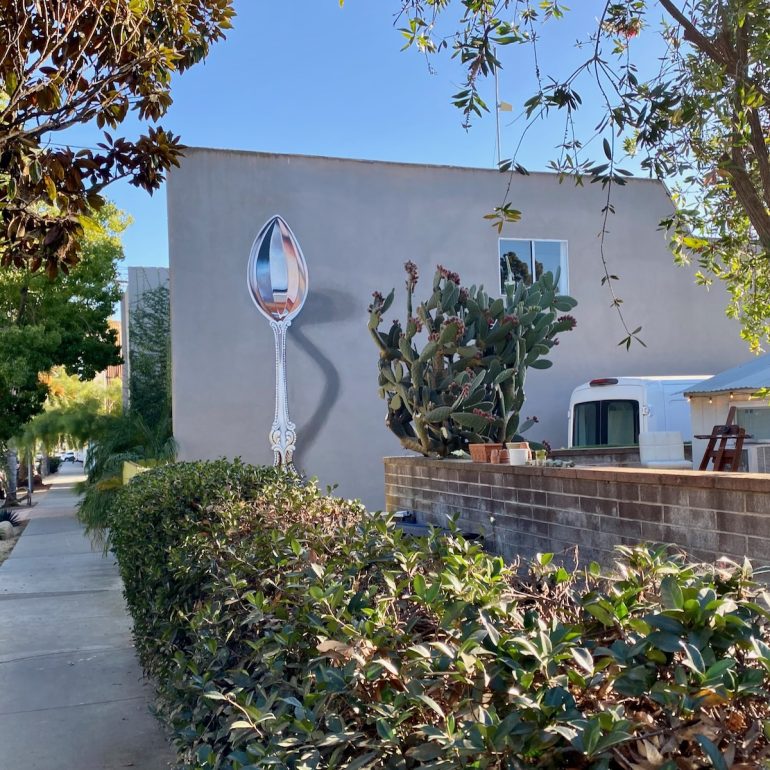
 Along Yanonali, there’s rather a lot of stuff affixed to utility poles.
Along Yanonali, there’s rather a lot of stuff affixed to utility poles.
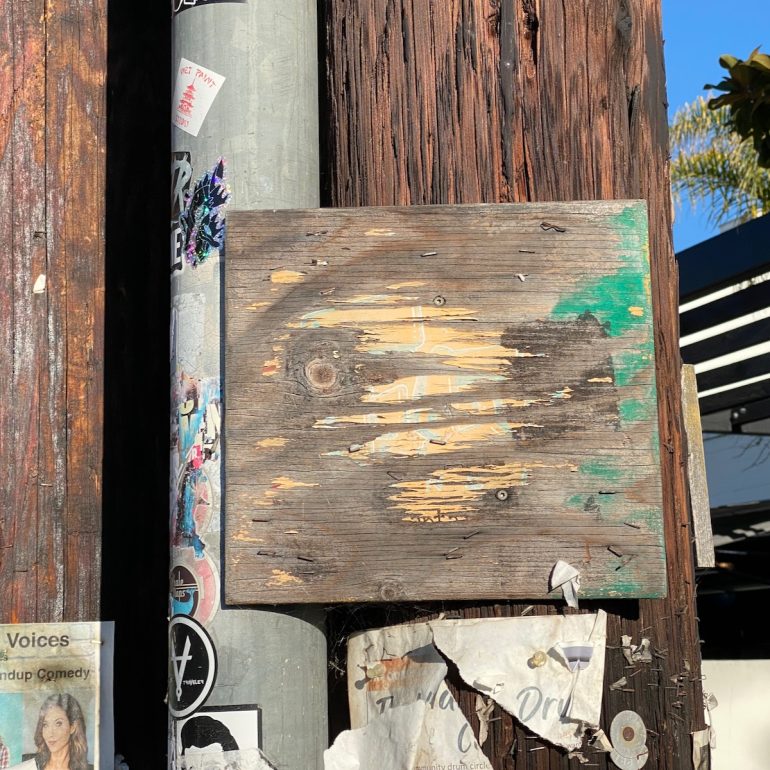
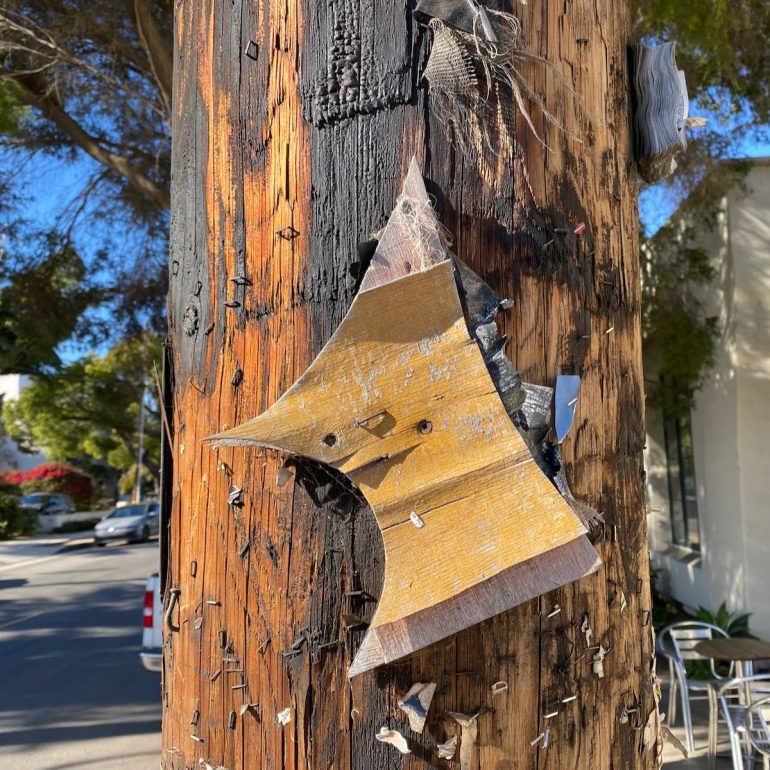
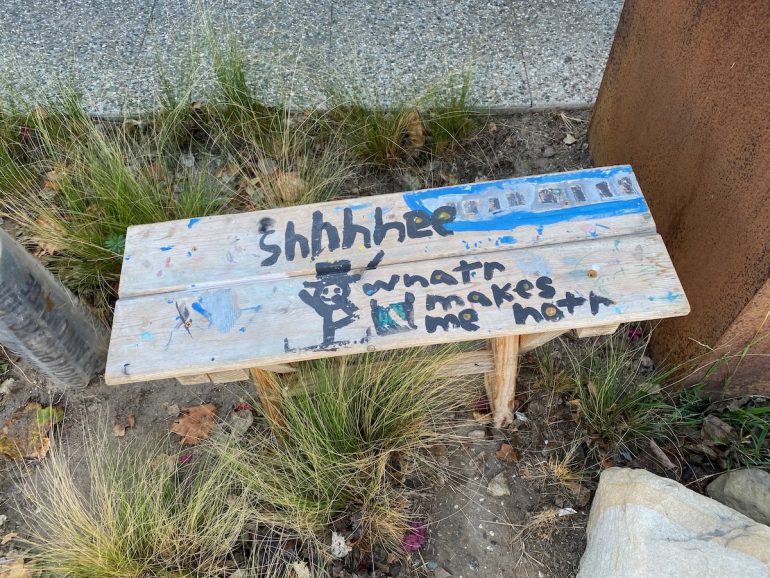 And then there’s this sign, which I would hang on my wall in a heartbeat.
And then there’s this sign, which I would hang on my wall in a heartbeat.
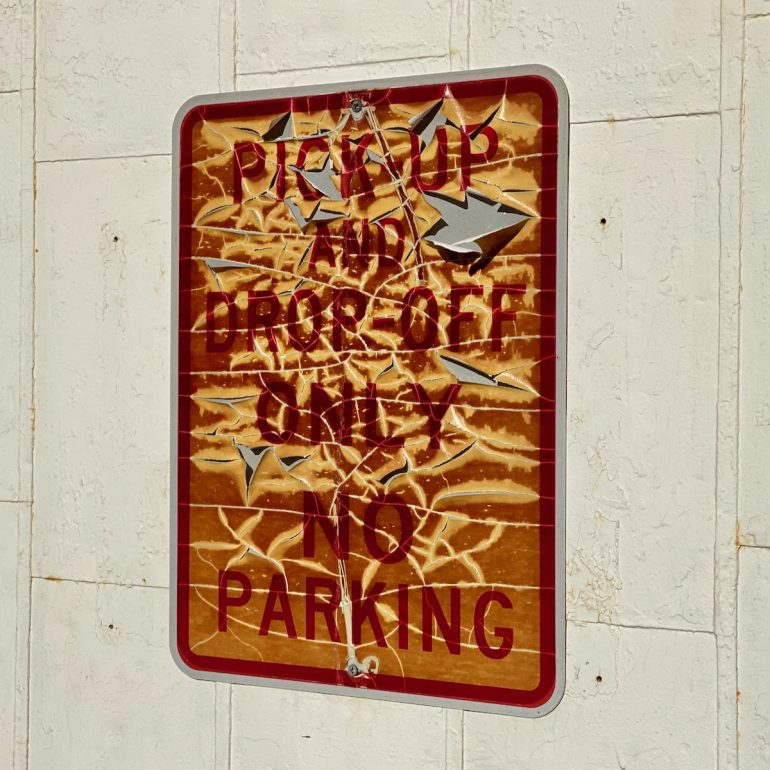 Artists continue to work in the Funk Zone, although not as many as once did. I long wondered what would happen to 209 Anacapa after it sold in mid-2021, and on this walk, I convinced myself that artist John Baran is using it as a studio, because his card was posted in the window and I caught a glimpse of canvases. Then, on a subsequent visit to Mony’s, I saw workers demoing the interior, so who knows? The bamboo vase on the fence is a nice touch.
Artists continue to work in the Funk Zone, although not as many as once did. I long wondered what would happen to 209 Anacapa after it sold in mid-2021, and on this walk, I convinced myself that artist John Baran is using it as a studio, because his card was posted in the window and I caught a glimpse of canvases. Then, on a subsequent visit to Mony’s, I saw workers demoing the interior, so who knows? The bamboo vase on the fence is a nice touch.
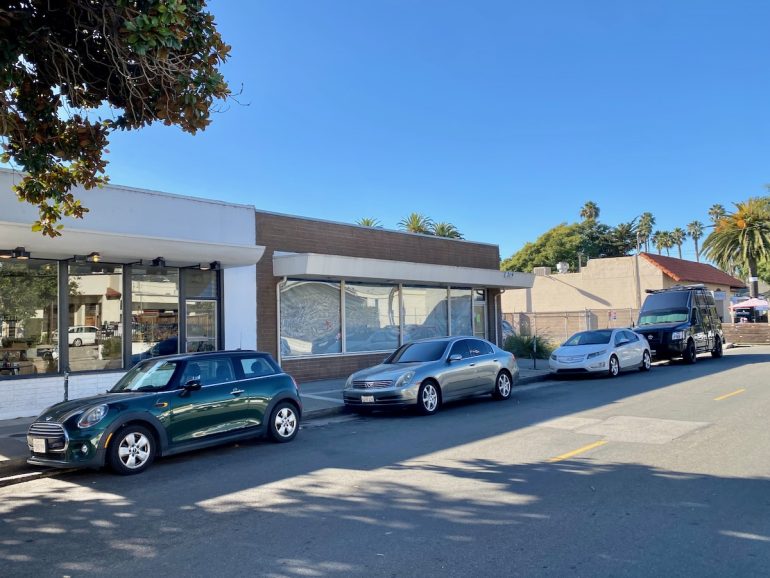
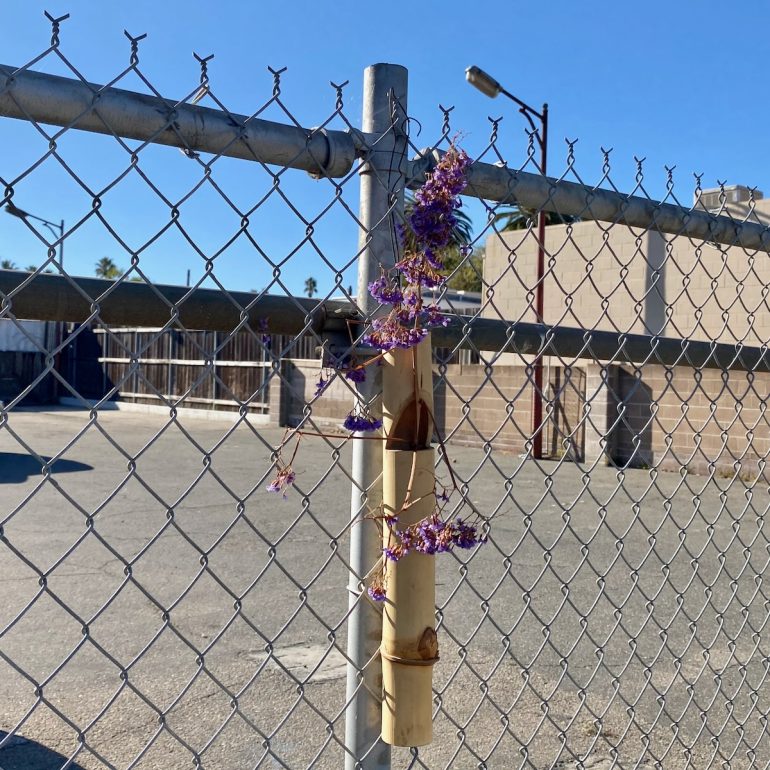 Flyers posted all along Yanonali contribute to the youthful vibe.
Flyers posted all along Yanonali contribute to the youthful vibe.
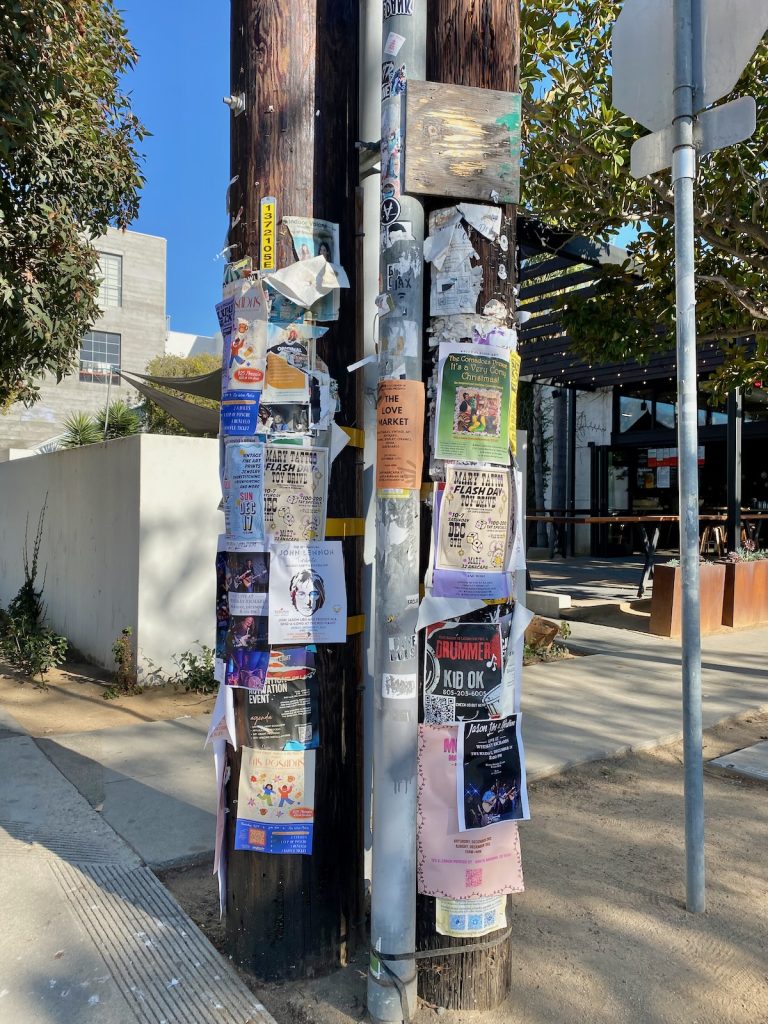 And the industrial remnants bestow a certain verisimilitude, versus the cleaned up parts of downtown.
And the industrial remnants bestow a certain verisimilitude, versus the cleaned up parts of downtown.
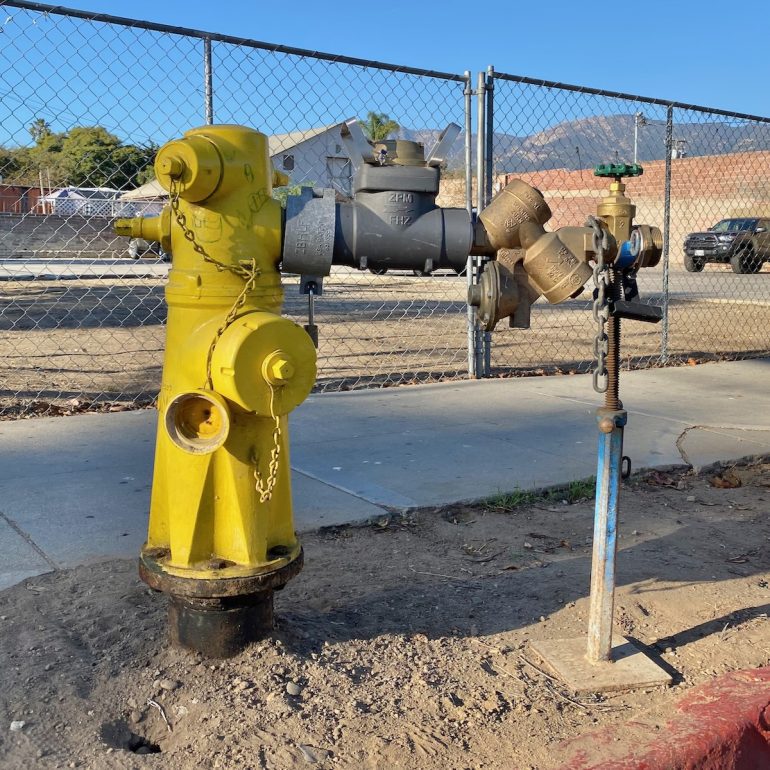
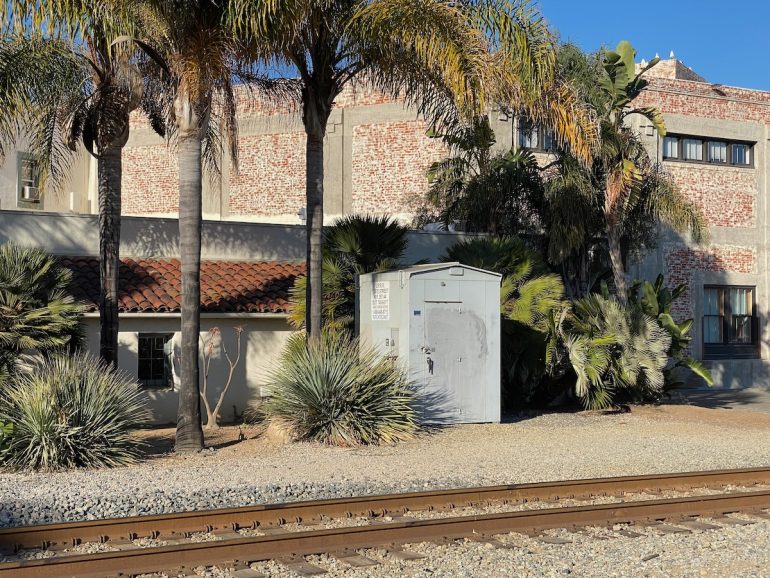
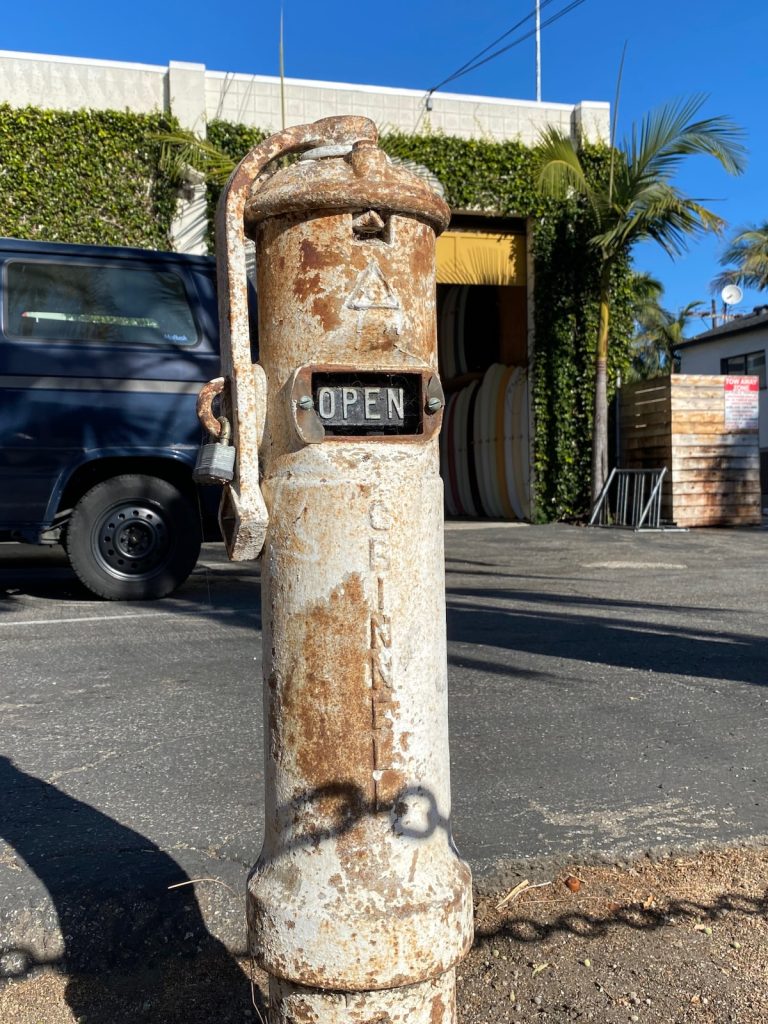
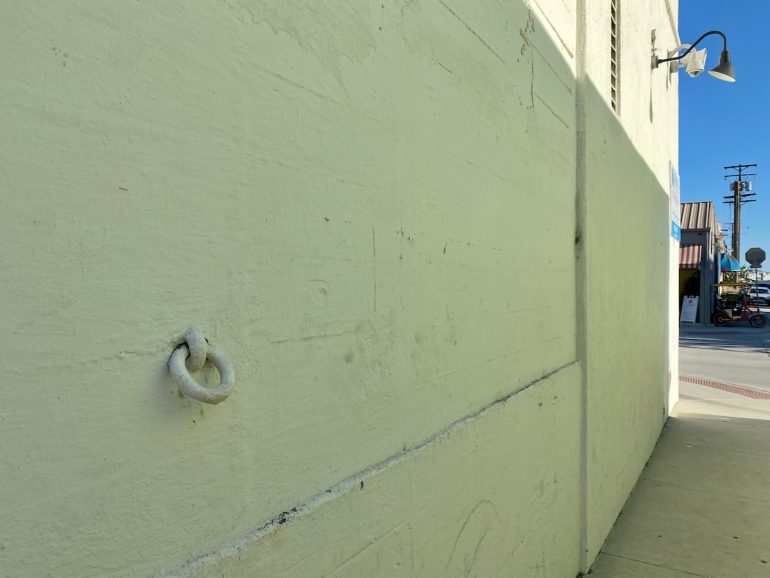 I briefly questioned what purpose these pieces of equipment could serve—and then realized they’re Christmas tree holders.
I briefly questioned what purpose these pieces of equipment could serve—and then realized they’re Christmas tree holders.
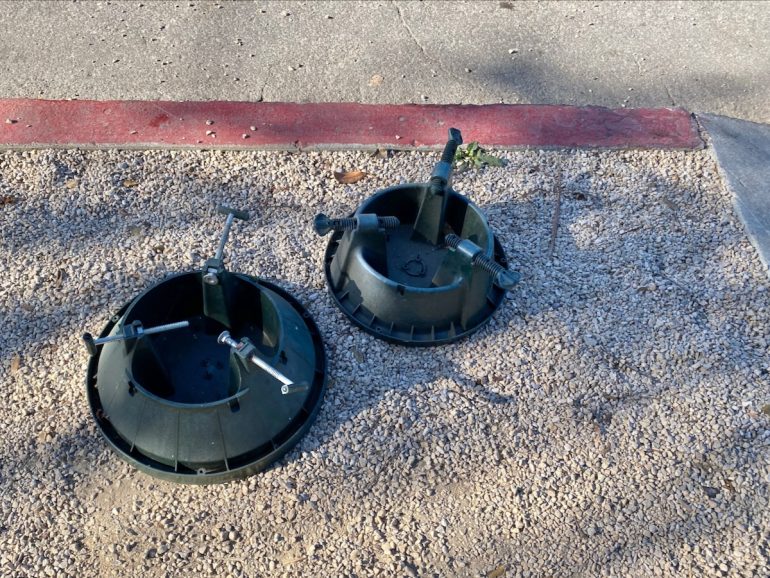 The vast amount of detail makes the neighborhood fertile ground for Where in Santa Barbara…? posts. In fact, the very first one was the mural outside Santa Barbara Koi. (The PVC-pipe spikes must be to discourage skateboarders.) I intended to ask the city whether businesses are allowed to claim street parking, but I never got around to it, and anyway, I think we know the answer.
The vast amount of detail makes the neighborhood fertile ground for Where in Santa Barbara…? posts. In fact, the very first one was the mural outside Santa Barbara Koi. (The PVC-pipe spikes must be to discourage skateboarders.) I intended to ask the city whether businesses are allowed to claim street parking, but I never got around to it, and anyway, I think we know the answer.
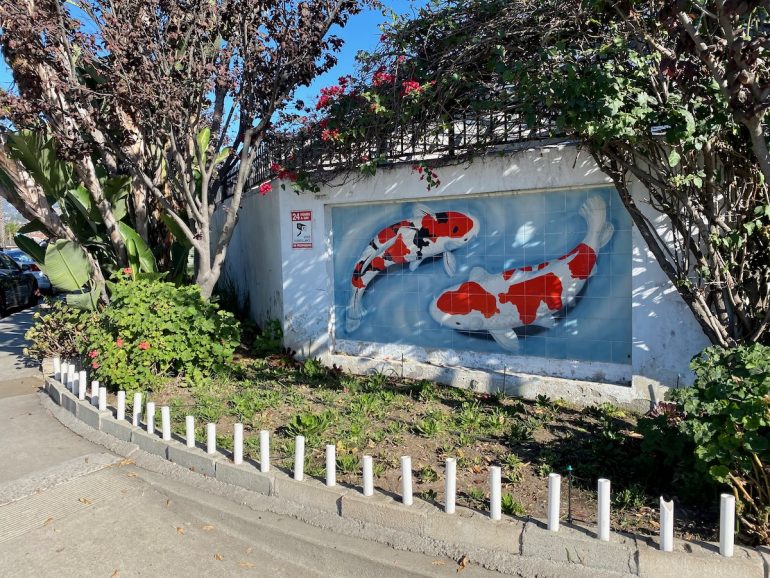
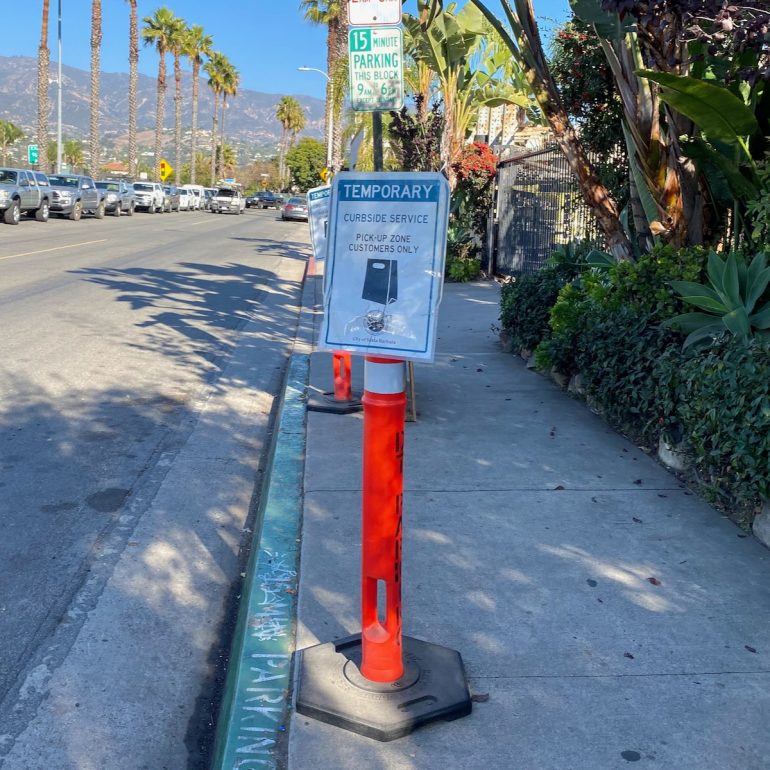 And we shouldn’t underestimate the way the train tracks bisecting the Funk Zone help make the neighborhood feel cool, or at least unsuburban. Can someone explain the point of the pedestrian gates? They’re at the Butterfly Lane crossing, too, but not Anacapa. And I’ve always thought the “LOOK” sign would be great on the front of a T-shirt, although I suppose it works better for men than women.
And we shouldn’t underestimate the way the train tracks bisecting the Funk Zone help make the neighborhood feel cool, or at least unsuburban. Can someone explain the point of the pedestrian gates? They’re at the Butterfly Lane crossing, too, but not Anacapa. And I’ve always thought the “LOOK” sign would be great on the front of a T-shirt, although I suppose it works better for men than women.
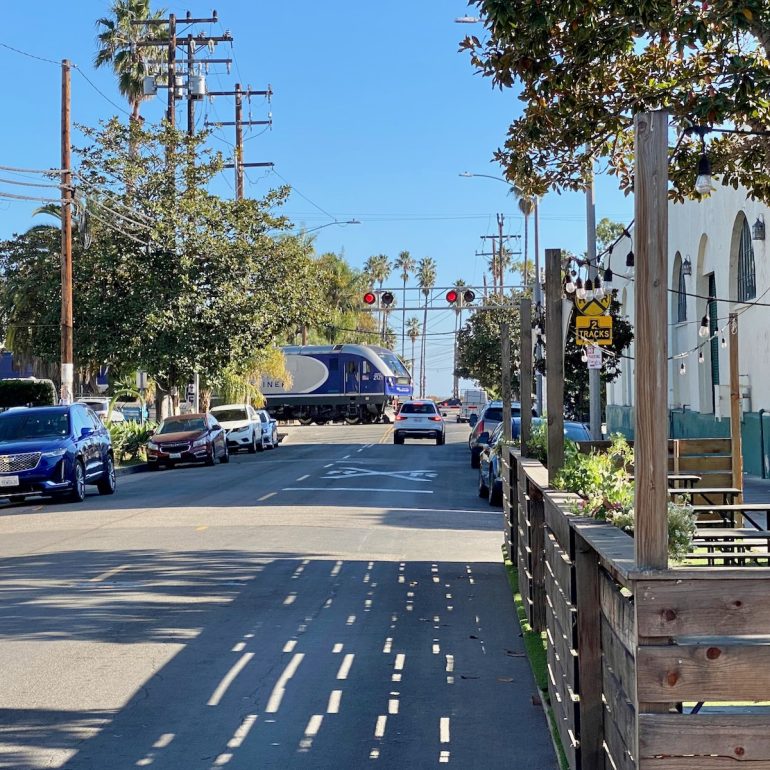
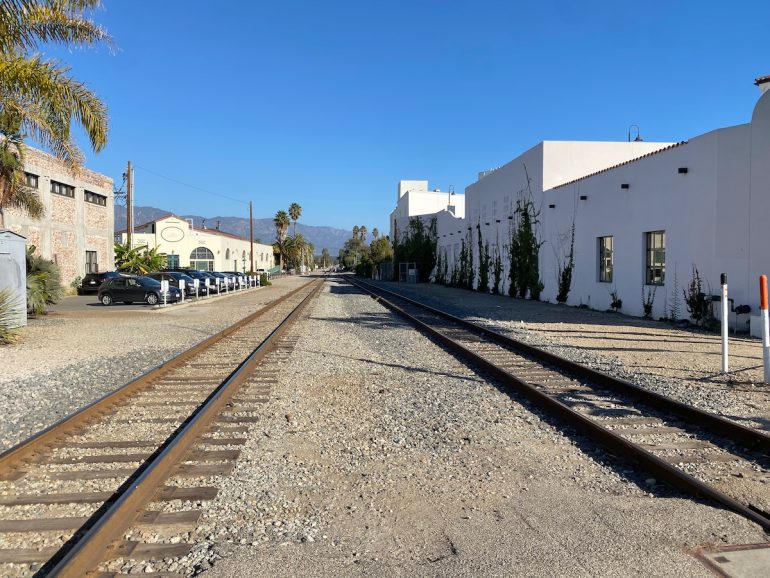
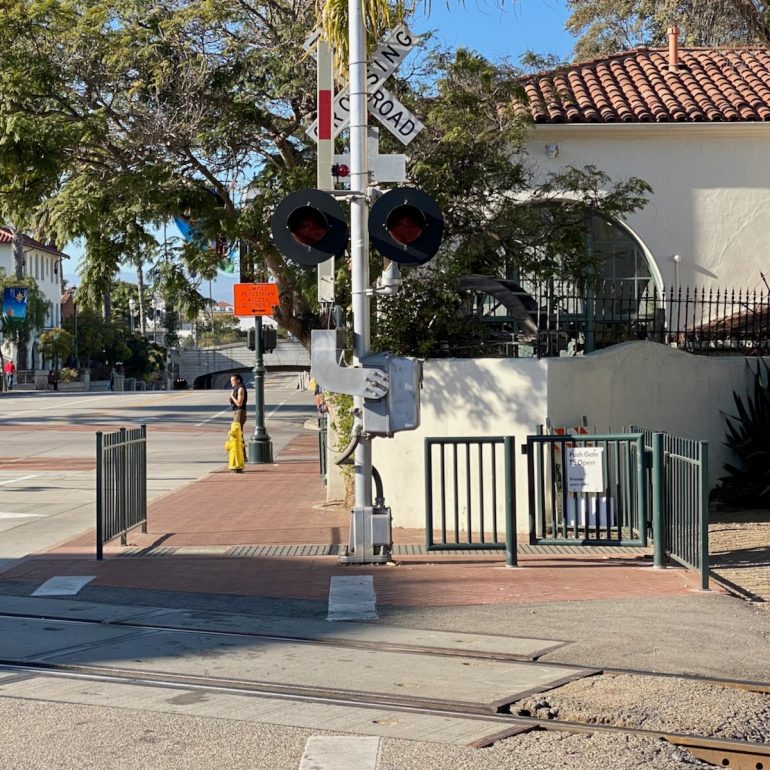
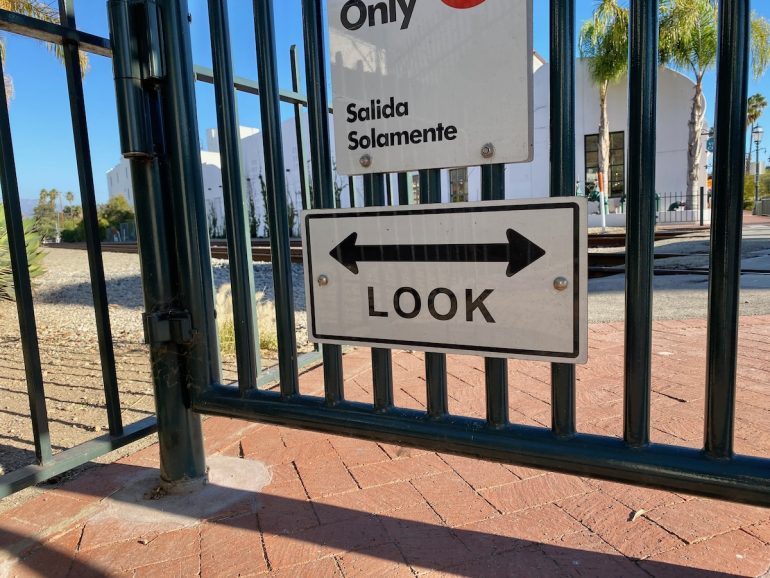 As elsewhere in the city, pedestrian paths make exploring more fun.
As elsewhere in the city, pedestrian paths make exploring more fun.
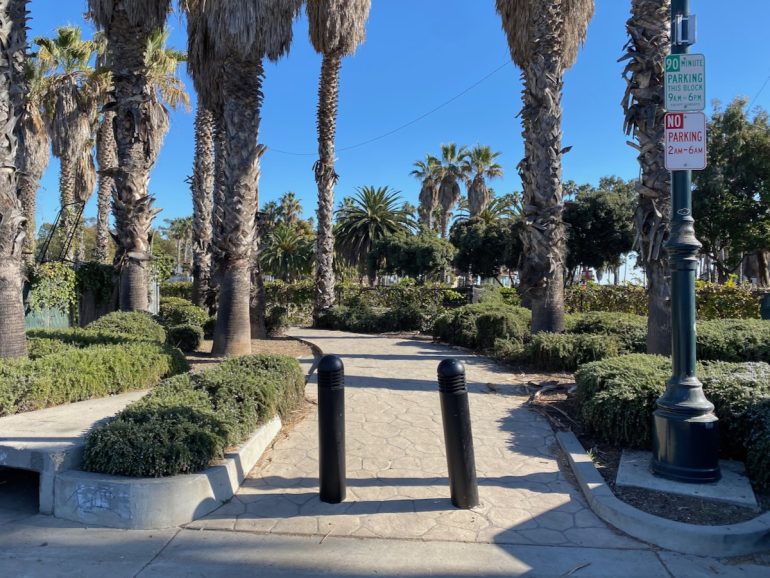
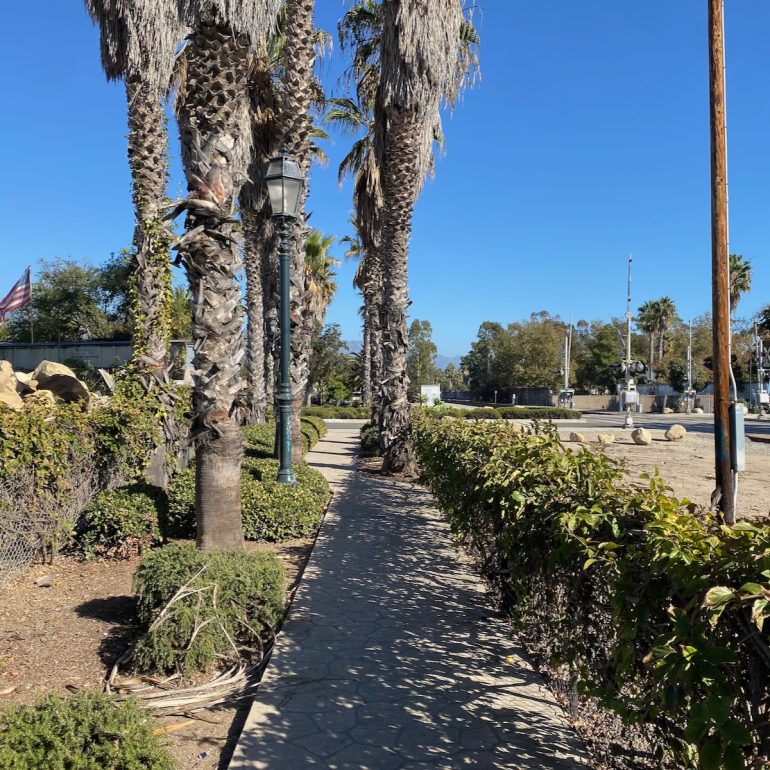
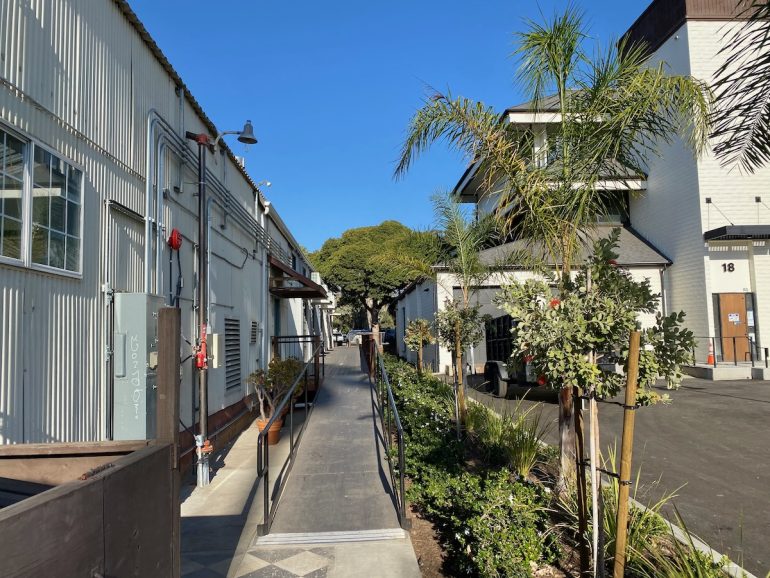
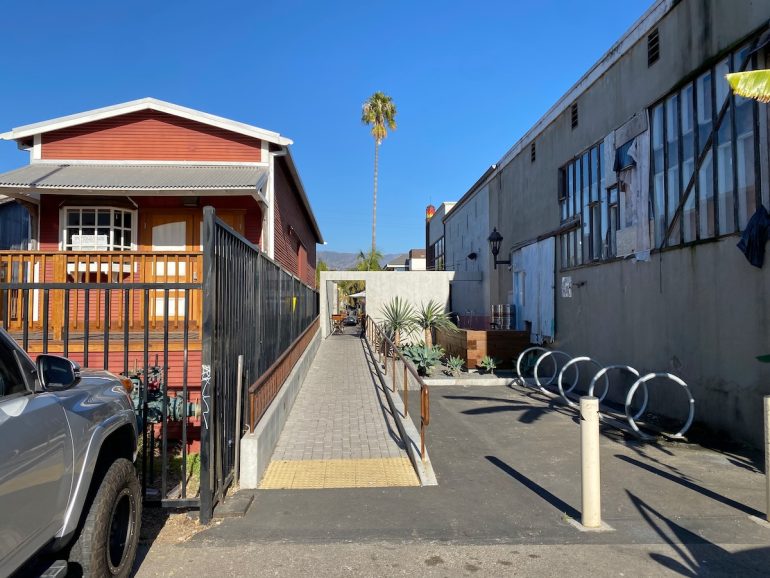 In this era, vacant lots might be the very definition of funky. The unfinishedness is refreshing. The first one below, at Yanonali Street and Helena Avenue, is such a mystery. How has it escaped development?
In this era, vacant lots might be the very definition of funky. The unfinishedness is refreshing. The first one below, at Yanonali Street and Helena Avenue, is such a mystery. How has it escaped development?
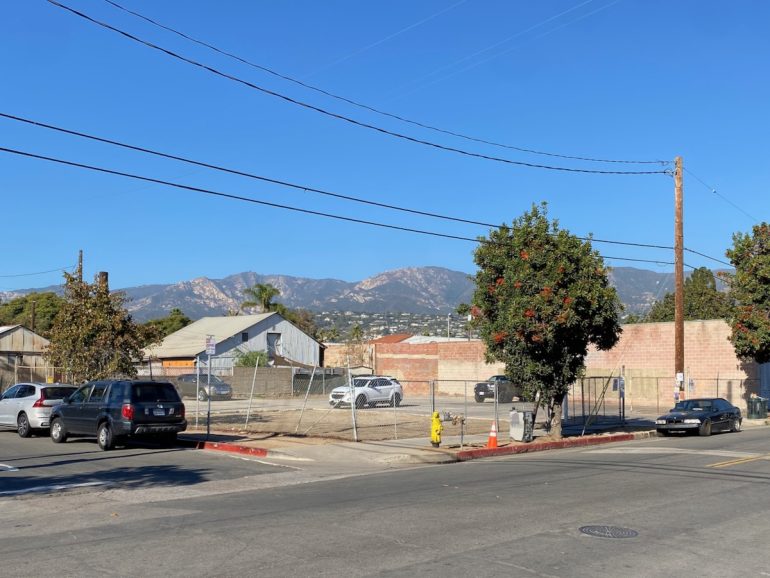
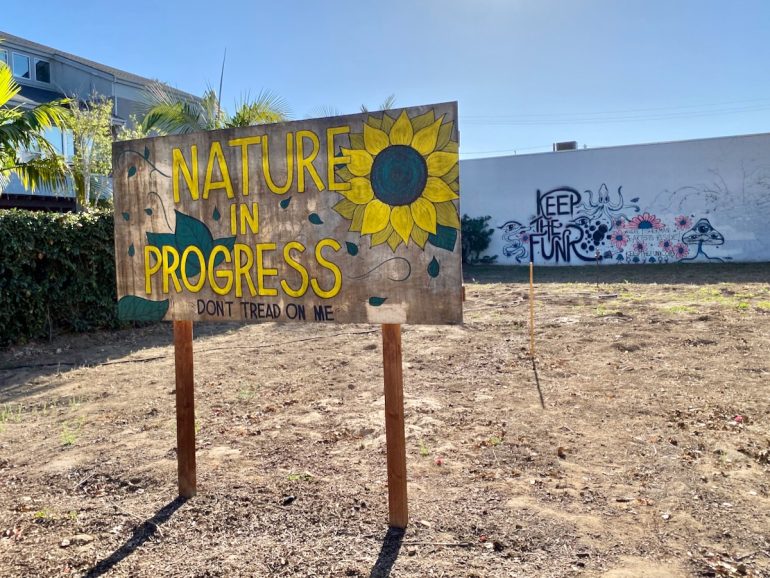 Related: dirt sidewalks. As your mayor, I will put a stop to this madness.
Related: dirt sidewalks. As your mayor, I will put a stop to this madness.
 The architecture is a mixed bag. When we think of the Funk Zone, we think fondly of the vestiges of the industrial era—the warehouse, the silo, the Quonset hut, and so on.
The architecture is a mixed bag. When we think of the Funk Zone, we think fondly of the vestiges of the industrial era—the warehouse, the silo, the Quonset hut, and so on.
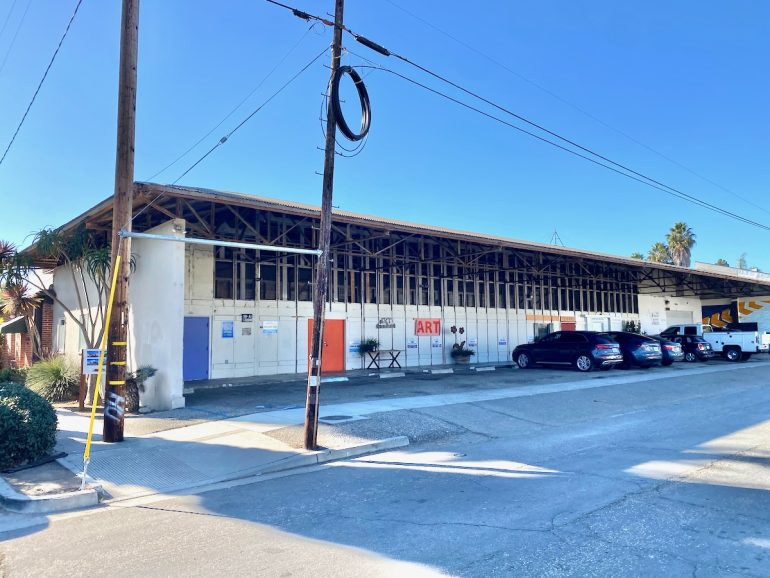
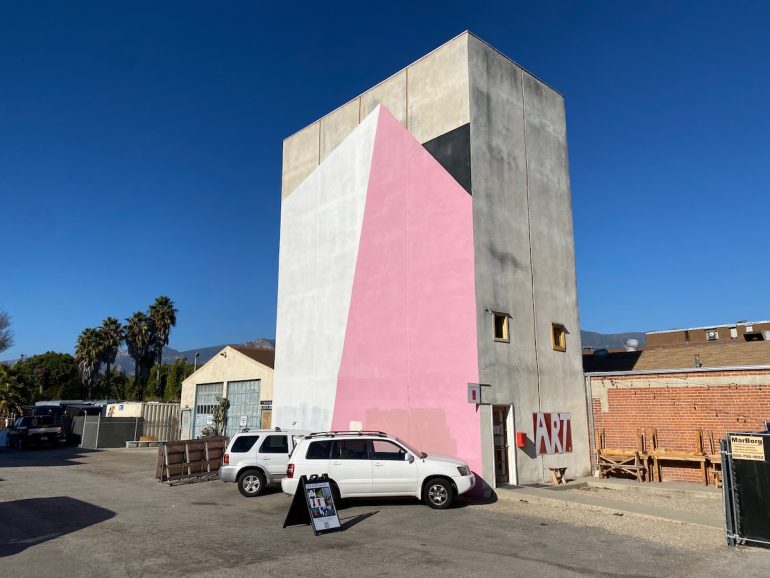
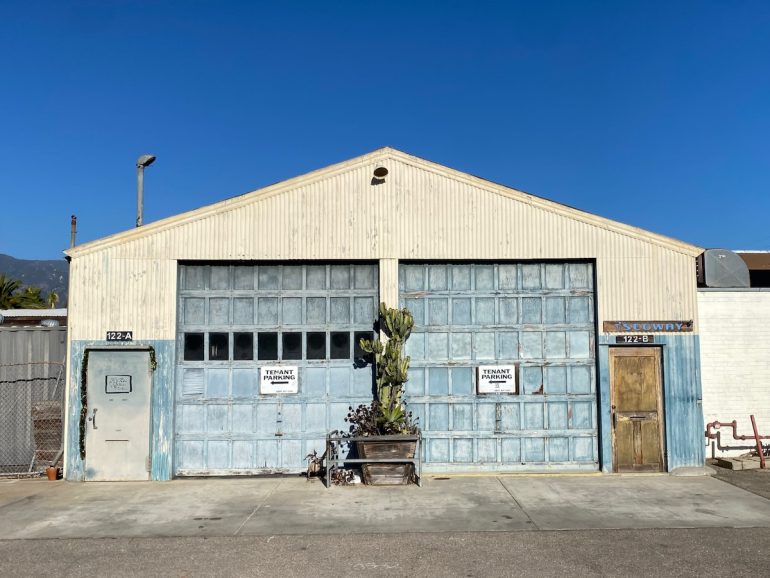 But there’s also architecture that would be just at home anywhere in town. The two below—213 Santa Barbara Street and the Villa del Mar complex—are Santa Barbara Spanish done rather well.
But there’s also architecture that would be just at home anywhere in town. The two below—213 Santa Barbara Street and the Villa del Mar complex—are Santa Barbara Spanish done rather well.
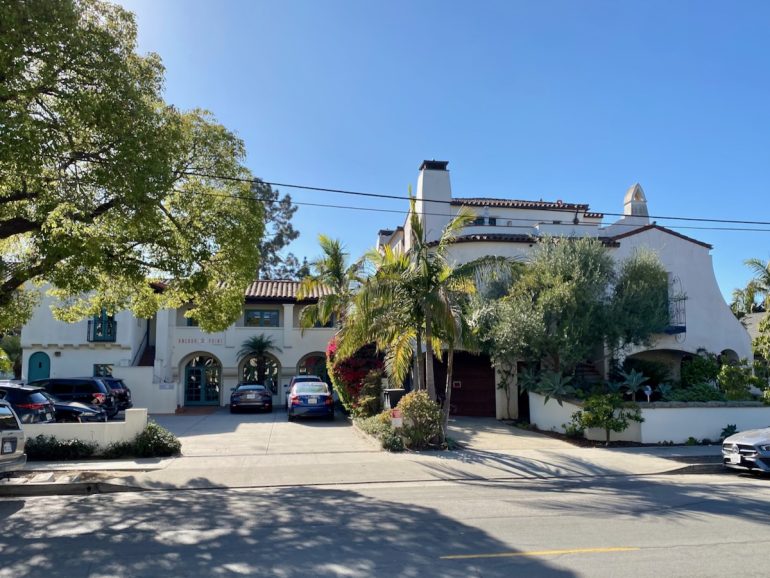
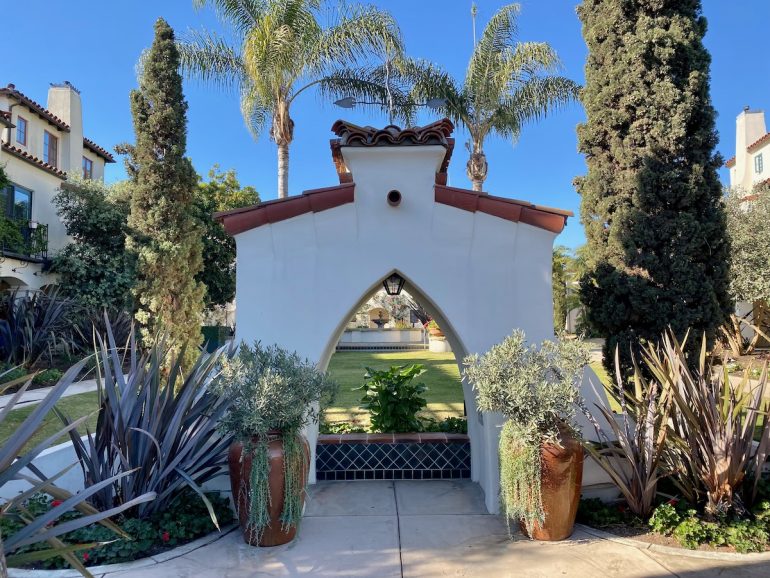
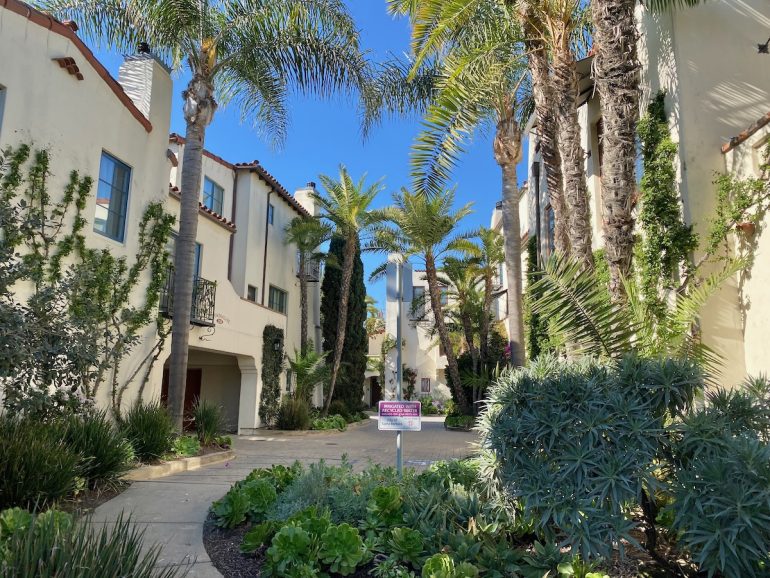 And, architecturally, it’s not all funk and charm. The building in the first two photos has a two-bedroom penthouse, which sort of explains the awkward deck. I’d put a mural on the facade just to distract from the shape.
And, architecturally, it’s not all funk and charm. The building in the first two photos has a two-bedroom penthouse, which sort of explains the awkward deck. I’d put a mural on the facade just to distract from the shape.
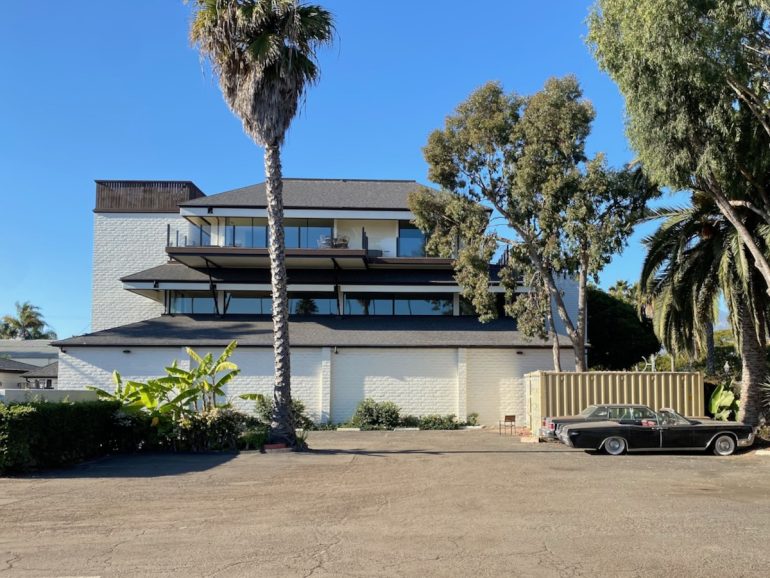
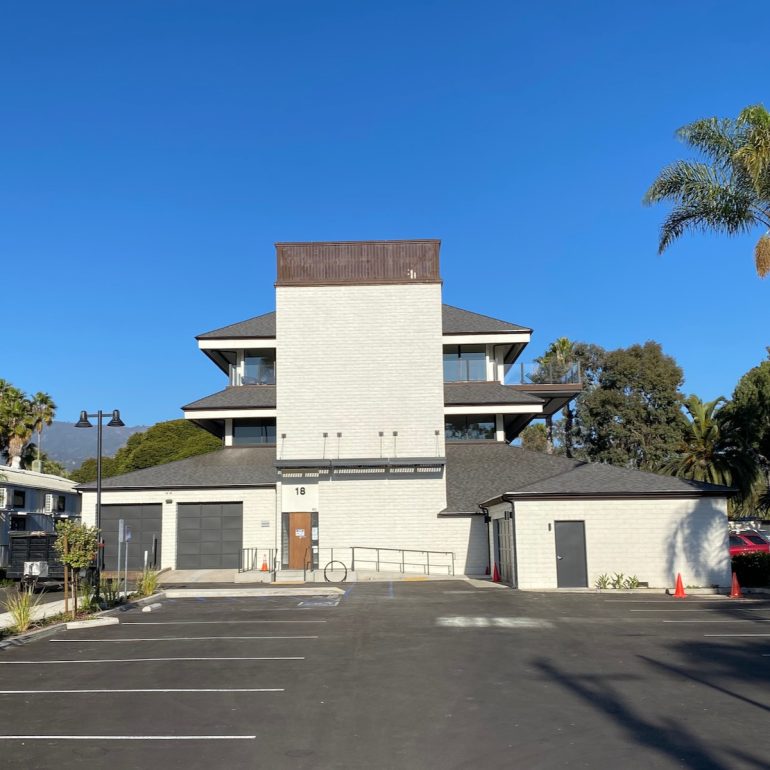
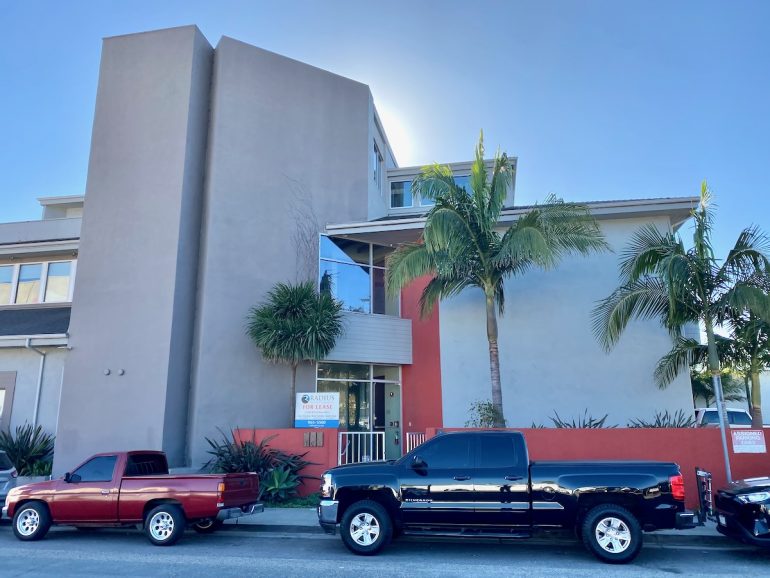 The Spearmint Rhino isn’t much to look at, either, at least outside. If you’re curious about the name, as I have been, here’s an explanation from a Guardian profile (“Lord of the Lap Dance”) of founder John Gray. “A chain of children’s restaurants—branded Peppermint Elephant—were quickly converted into table-dancing clubs. Struggling for a name, Gray and cohorts played around with their options. They were adamant they didn’t want anything sleazy. Spearmint Rhino was born.” Every time I pass by, I think of a conversation I had with someone about the economics of the industry, and how the dancers who work during the day make much less than those at night. The phrase “lunchtime stripper” got bandied about, and ever since, I’ve wanted it on a license plate frame.
The Spearmint Rhino isn’t much to look at, either, at least outside. If you’re curious about the name, as I have been, here’s an explanation from a Guardian profile (“Lord of the Lap Dance”) of founder John Gray. “A chain of children’s restaurants—branded Peppermint Elephant—were quickly converted into table-dancing clubs. Struggling for a name, Gray and cohorts played around with their options. They were adamant they didn’t want anything sleazy. Spearmint Rhino was born.” Every time I pass by, I think of a conversation I had with someone about the economics of the industry, and how the dancers who work during the day make much less than those at night. The phrase “lunchtime stripper” got bandied about, and ever since, I’ve wanted it on a license plate frame.
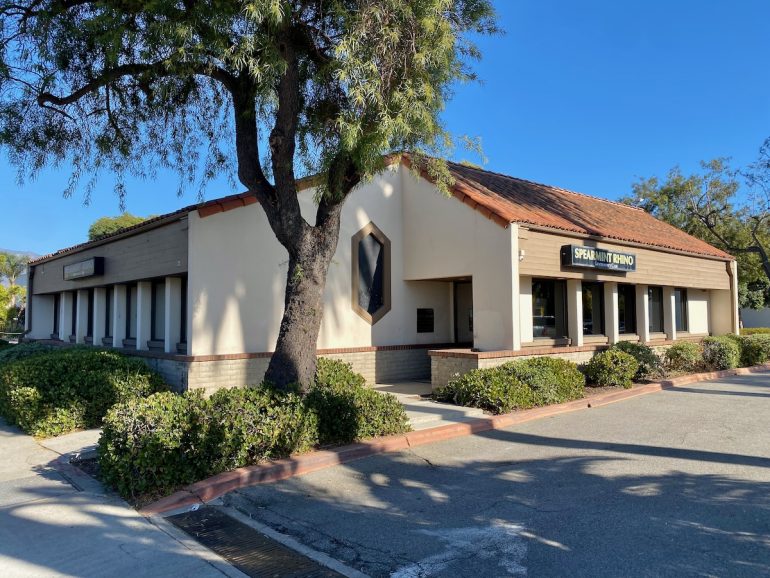 What makes it all work is the mix. Several small homes are streaking distance from the aforementioned “gentlemen’s club.”
What makes it all work is the mix. Several small homes are streaking distance from the aforementioned “gentlemen’s club.”
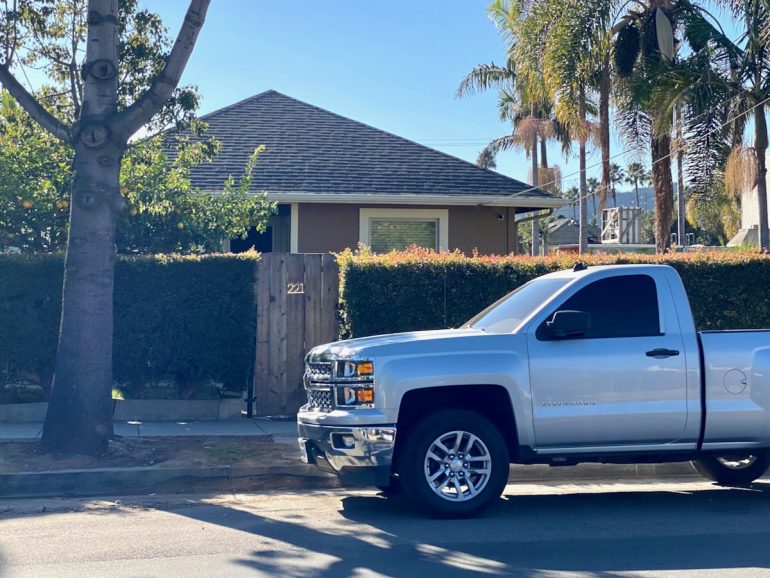
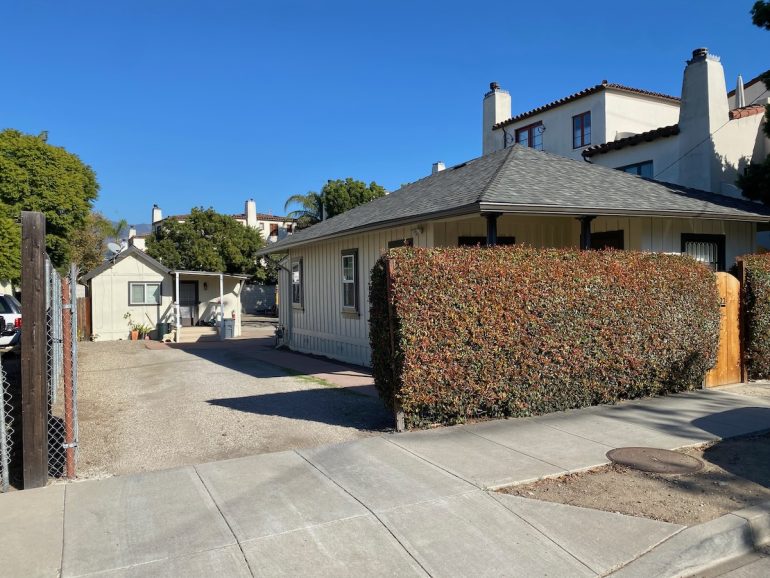
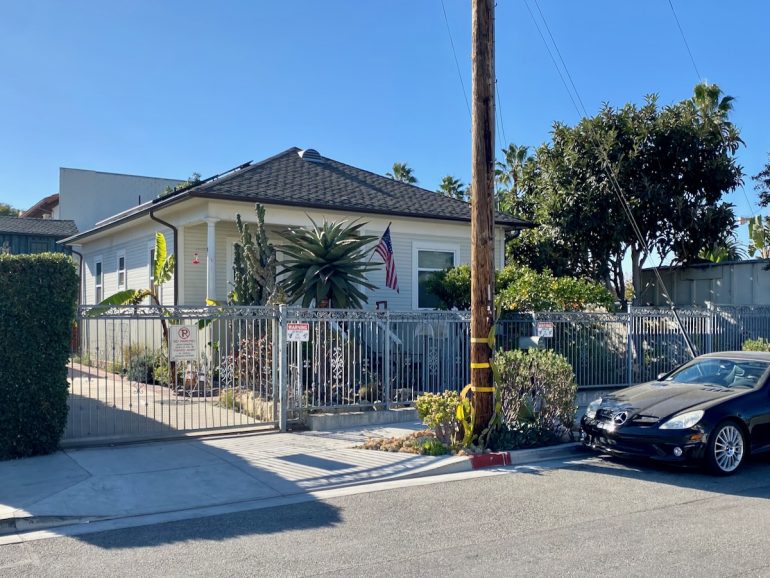
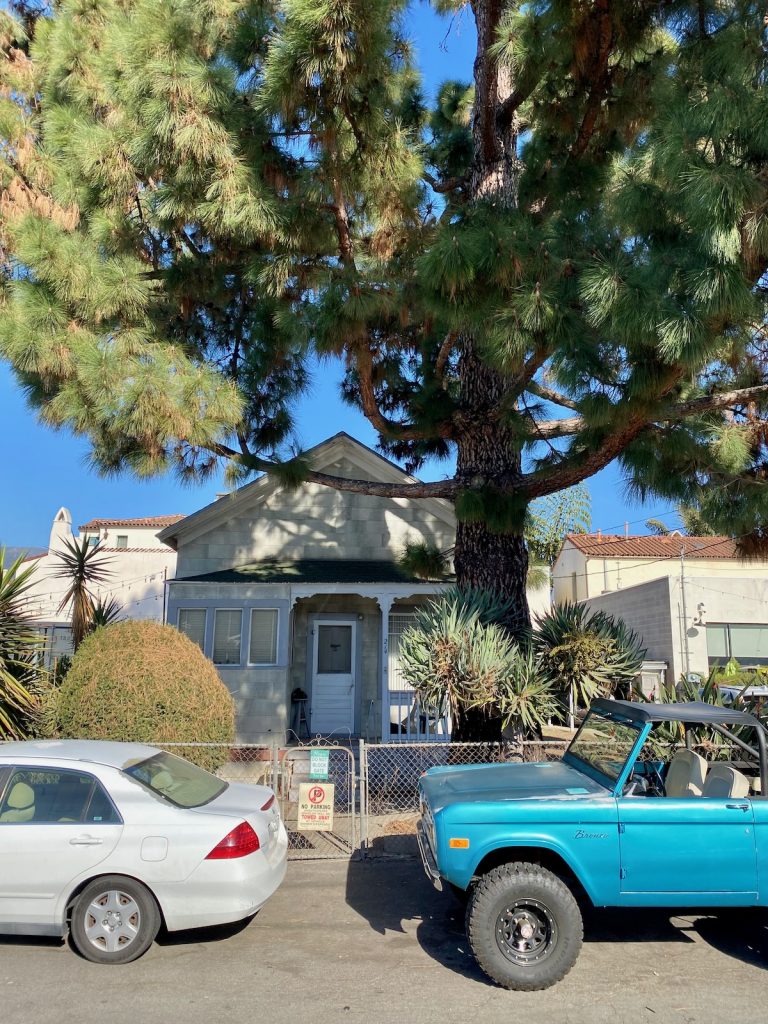 And of course you have restaurants. I don’t know that the modern-day Funk Zone would exist as it does without Acme Hospitality’s establishments. If you’ve never visited here from somewhere cold, let me tell you how seductive it is to have dinner on the Lark’s terrace when you’ve been wearing a heavy coat for months. Acme really knows how to set a scene, whether it’s the “Loquita” embedded at the threshold or Lucky Penny’s iconic facade. I guess the increased capacity must make up for the aesthetic jumble that the Lark/Lucky Penny parking lot has become.
And of course you have restaurants. I don’t know that the modern-day Funk Zone would exist as it does without Acme Hospitality’s establishments. If you’ve never visited here from somewhere cold, let me tell you how seductive it is to have dinner on the Lark’s terrace when you’ve been wearing a heavy coat for months. Acme really knows how to set a scene, whether it’s the “Loquita” embedded at the threshold or Lucky Penny’s iconic facade. I guess the increased capacity must make up for the aesthetic jumble that the Lark/Lucky Penny parking lot has become.
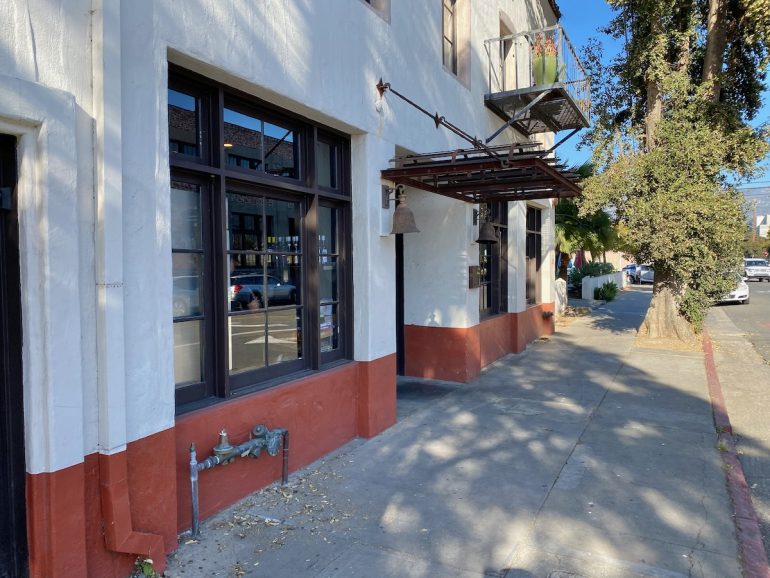
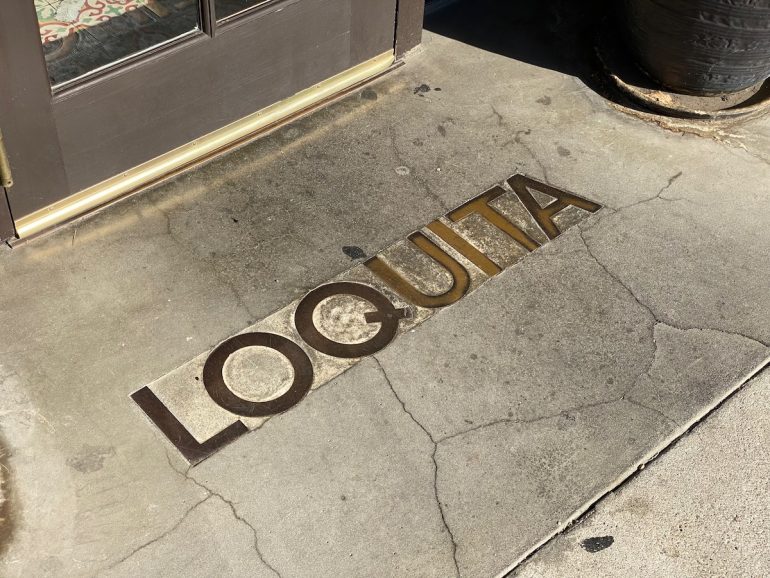
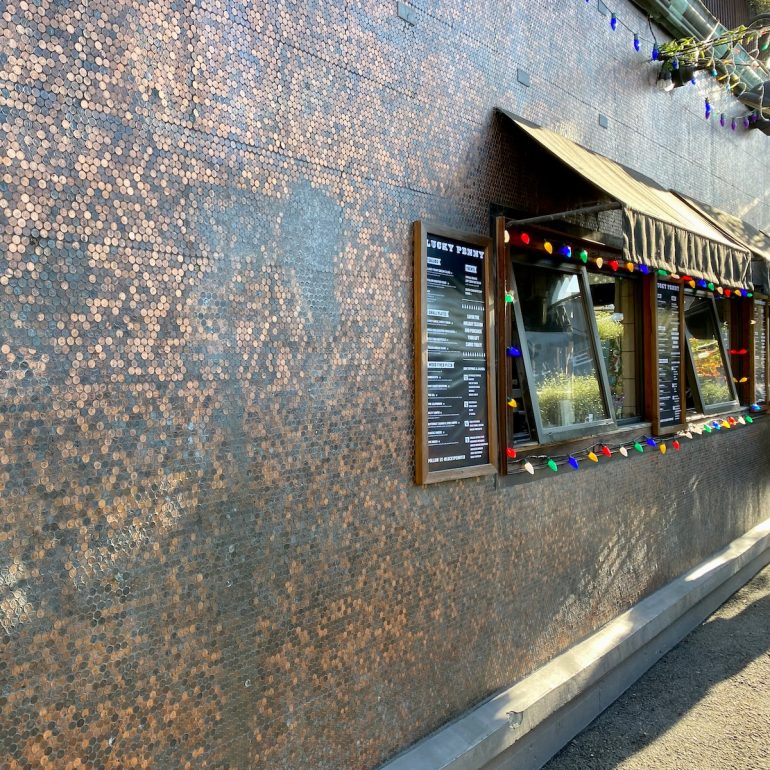
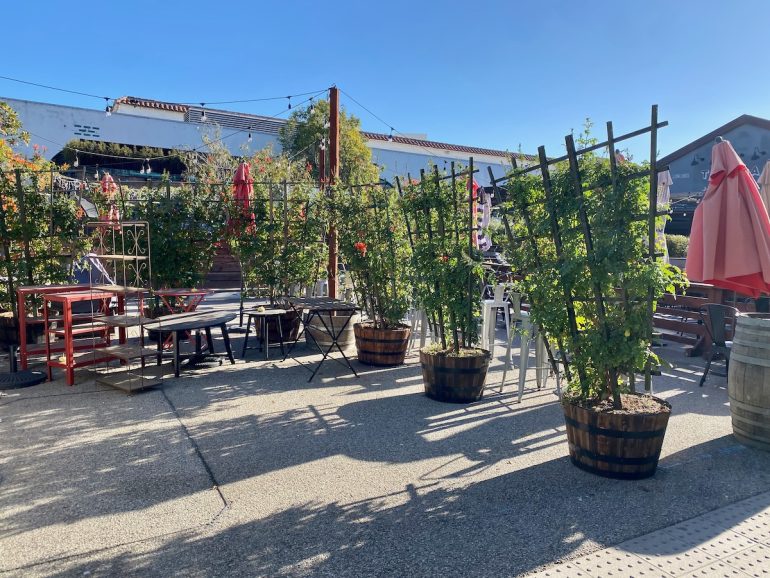 On this walk, I generally stayed out of businesses—there was already enough to write about. I made an exception for McConnell’s, because it was peppermint stick season and the Funk Zone location doesn’t normally carry it. Wooden spoons are great for the environment, as opposed to plastic, but next time I’ll ask if I can use a metal tasting spoon instead. And too late for this year’s holiday gift guide, but the coffee mugs are clever.
On this walk, I generally stayed out of businesses—there was already enough to write about. I made an exception for McConnell’s, because it was peppermint stick season and the Funk Zone location doesn’t normally carry it. Wooden spoons are great for the environment, as opposed to plastic, but next time I’ll ask if I can use a metal tasting spoon instead. And too late for this year’s holiday gift guide, but the coffee mugs are clever.
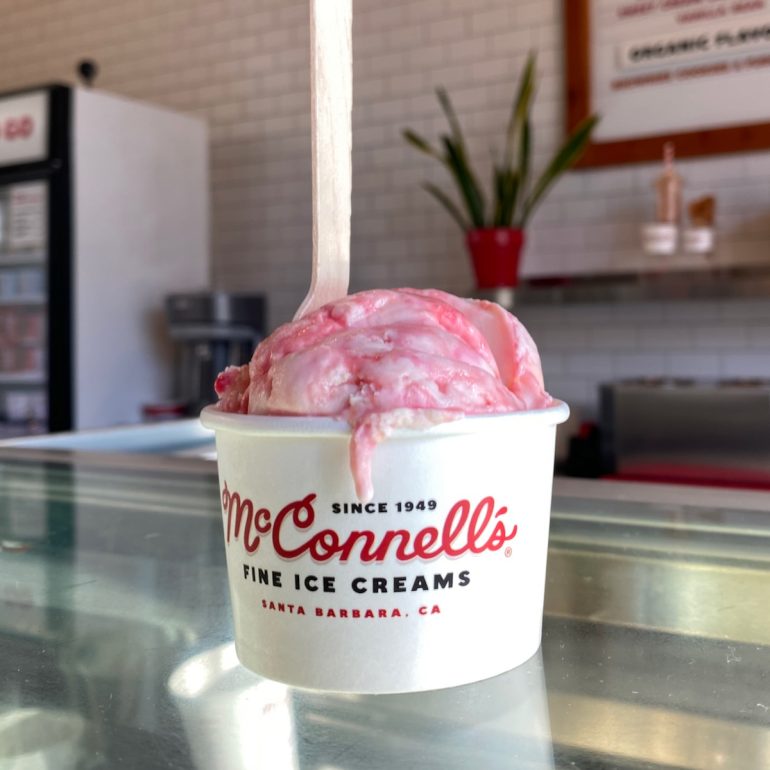
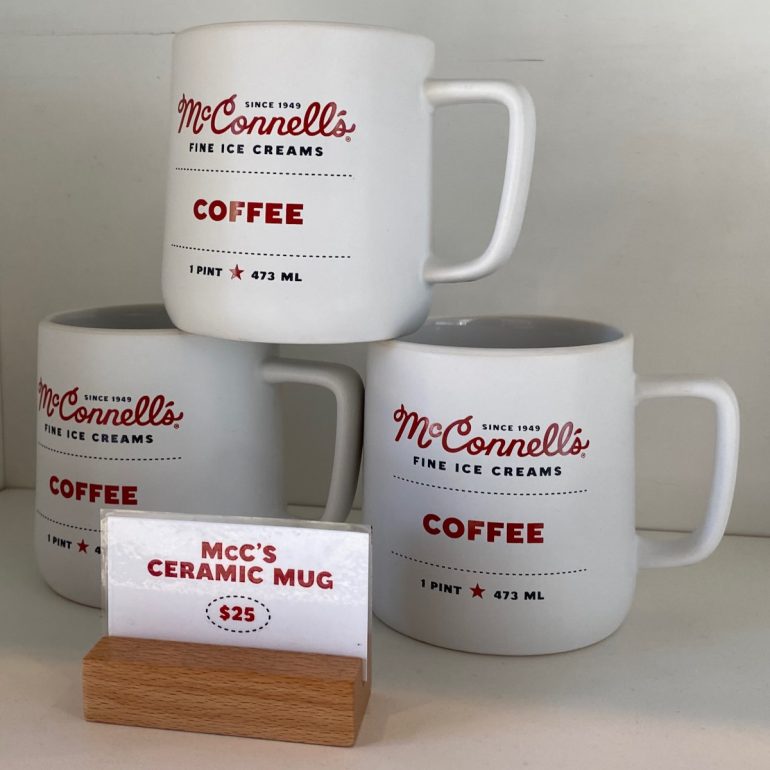 If you’re looking for a place to have a drink in the Funk Zone, consider the Goat Tree. It has a full liquor license and plentiful outdoor seating, and it’s open till 8 p.m.
If you’re looking for a place to have a drink in the Funk Zone, consider the Goat Tree. It has a full liquor license and plentiful outdoor seating, and it’s open till 8 p.m.
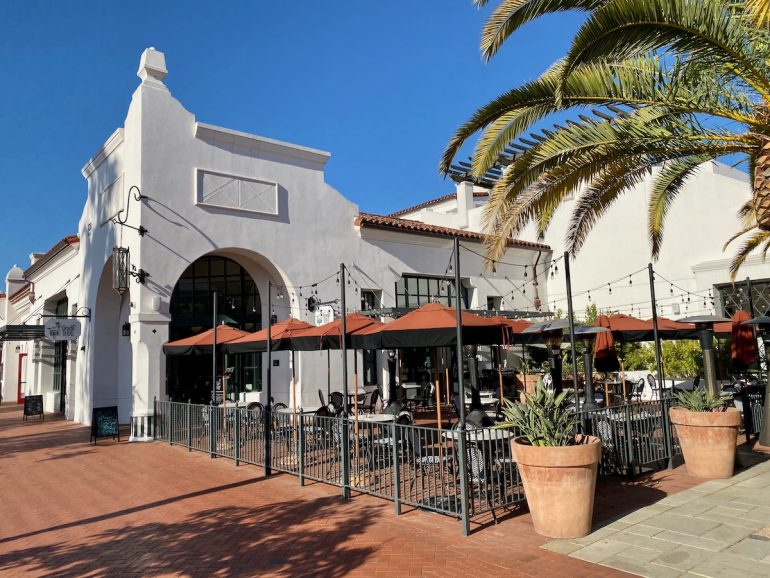 More restaurants and bars are on the way. Below, from top: Silvers Omakase, the Japanese tasting-menu restaurant from chef Lennon Silvers Lee, debuts February 6; Happy Cat Eats, a sibling to Oku next door; the Starbucks on State Street that I mentioned earlier; a bar in the little red building at 42 Helena Avenue; and two more TBA in the Waterline complex (also home to Lama Dog, The Nook, et al).
More restaurants and bars are on the way. Below, from top: Silvers Omakase, the Japanese tasting-menu restaurant from chef Lennon Silvers Lee, debuts February 6; Happy Cat Eats, a sibling to Oku next door; the Starbucks on State Street that I mentioned earlier; a bar in the little red building at 42 Helena Avenue; and two more TBA in the Waterline complex (also home to Lama Dog, The Nook, et al).
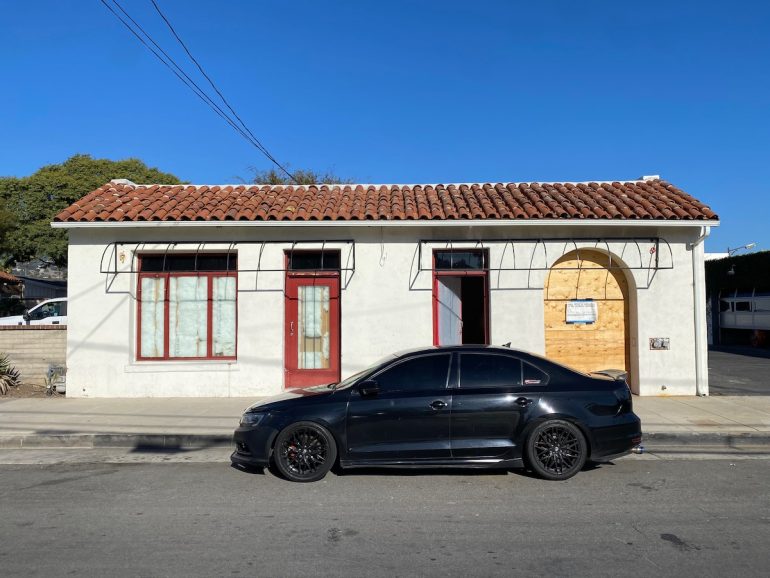
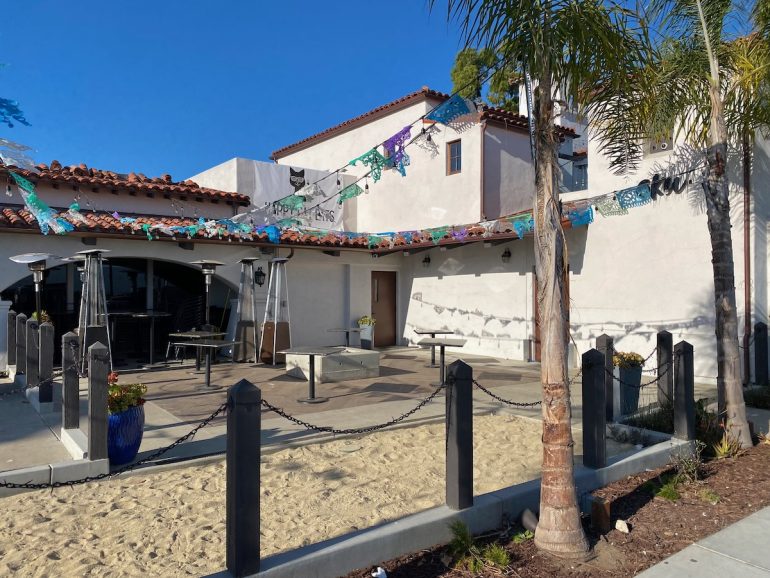
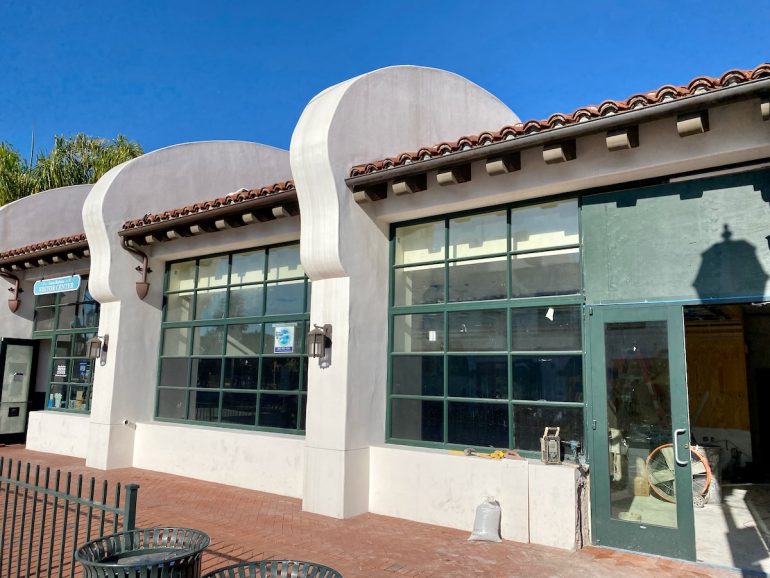
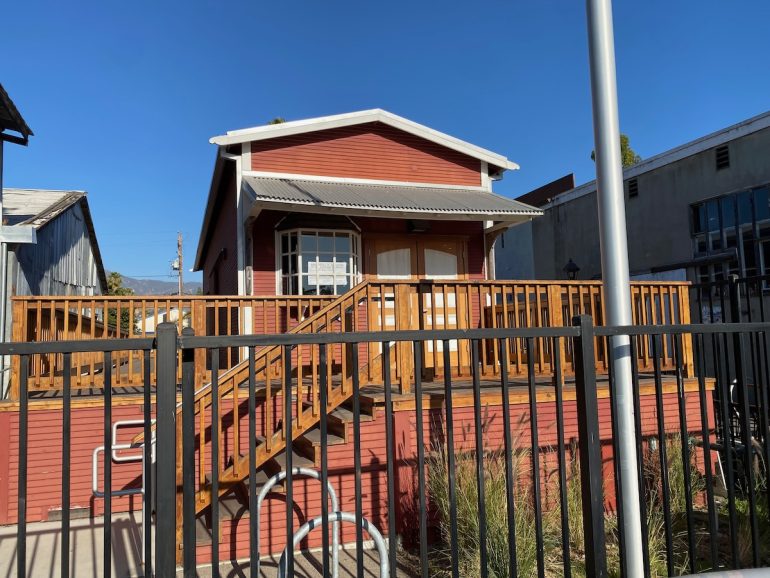
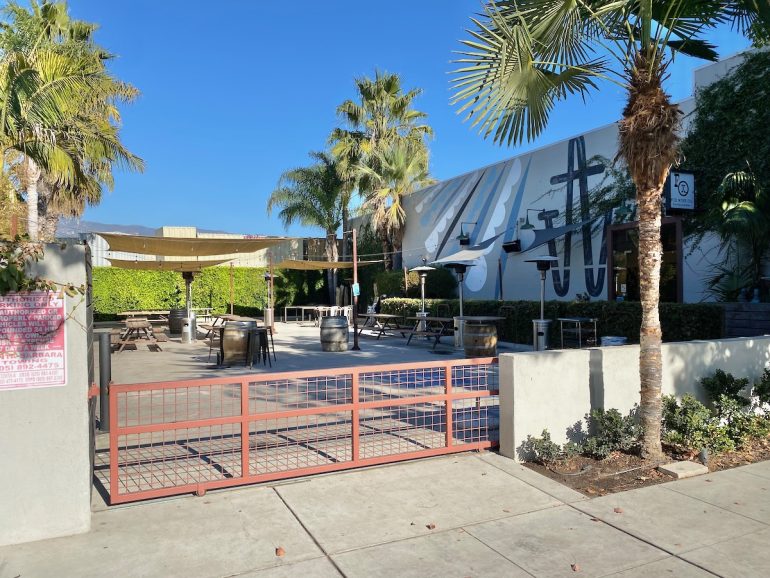 Years ago, plans were submitted to turn the old Avis/Budget outpost into a tasting room, but I believe that’s no longer the goal. It’s looking cute, though.
Years ago, plans were submitted to turn the old Avis/Budget outpost into a tasting room, but I believe that’s no longer the goal. It’s looking cute, though.
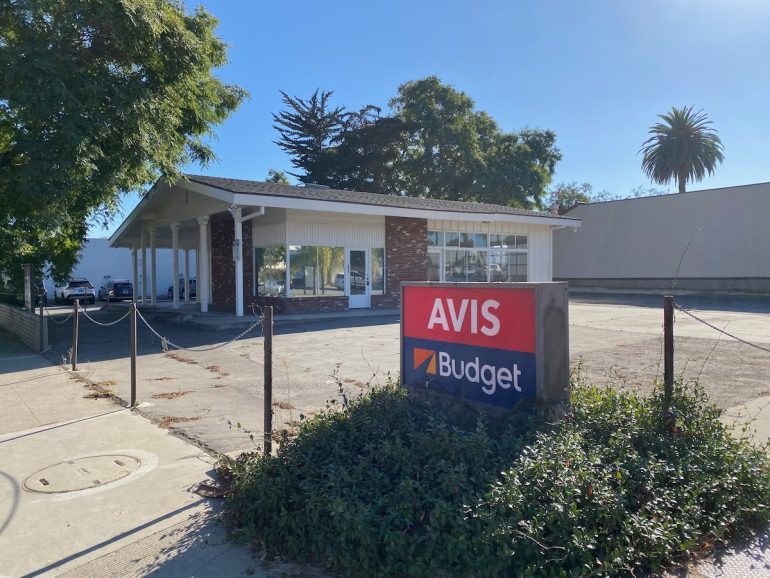 As for shops, Cabana Home’s chair display always reminds me of Madonna’s “Human Nature” video or that Ormond Gigli photo that the New York Times recently wrote about. And Raoul’s little terrace must be a pleasant spot for a break.
As for shops, Cabana Home’s chair display always reminds me of Madonna’s “Human Nature” video or that Ormond Gigli photo that the New York Times recently wrote about. And Raoul’s little terrace must be a pleasant spot for a break.
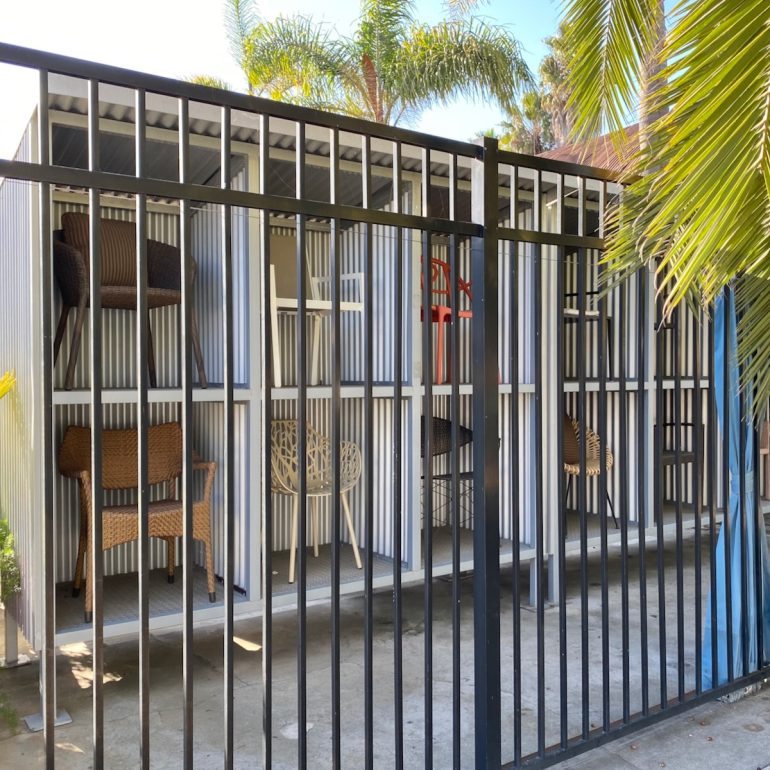
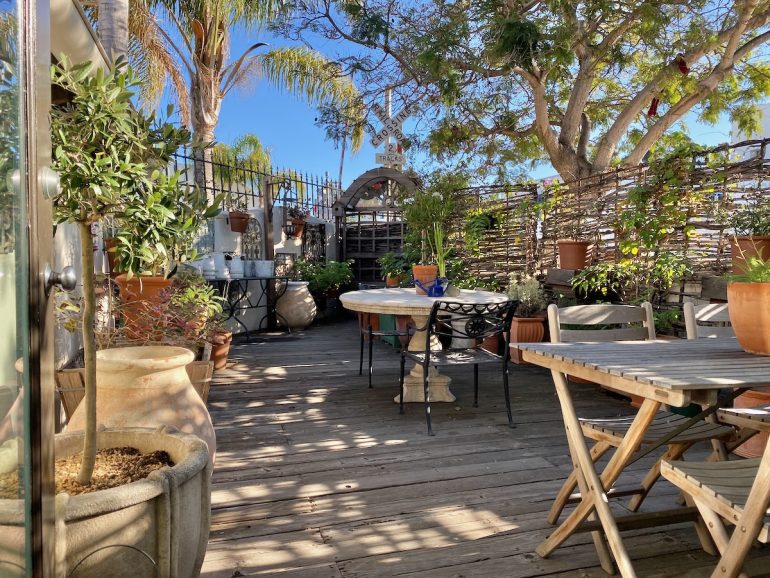 I’ve never been inside The Waterman hotel. It was rebranded (from the Wayfarer) three years ago, and it still doesn’t have a proper sign…?
I’ve never been inside The Waterman hotel. It was rebranded (from the Wayfarer) three years ago, and it still doesn’t have a proper sign…?
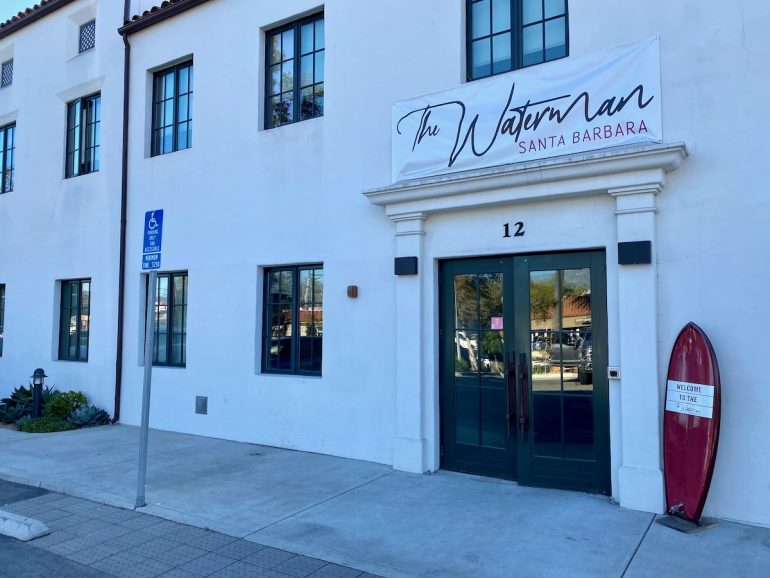 When I go to the Funk Zone now, I tend to treat it as a surgical strike: get in, get out. But strolling these streets with no point is very rewarding. There’s so much to notice! For instance, flora….
When I go to the Funk Zone now, I tend to treat it as a surgical strike: get in, get out. But strolling these streets with no point is very rewarding. There’s so much to notice! For instance, flora….
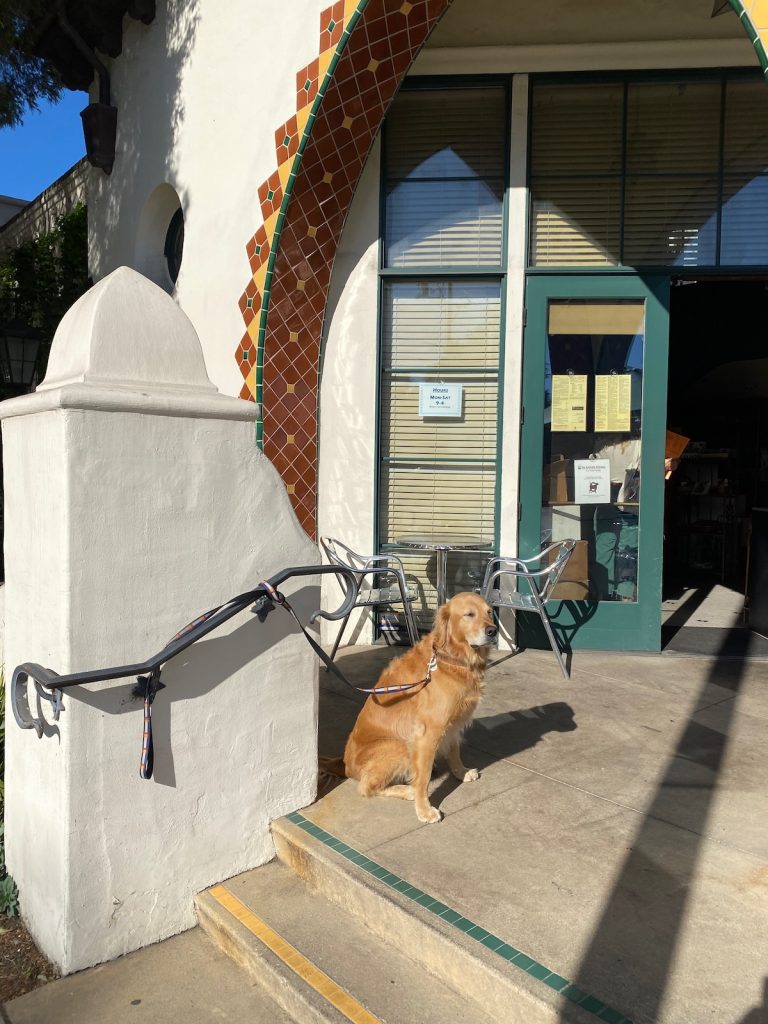 And if you’re really lucky, a mix of the two.
And if you’re really lucky, a mix of the two.
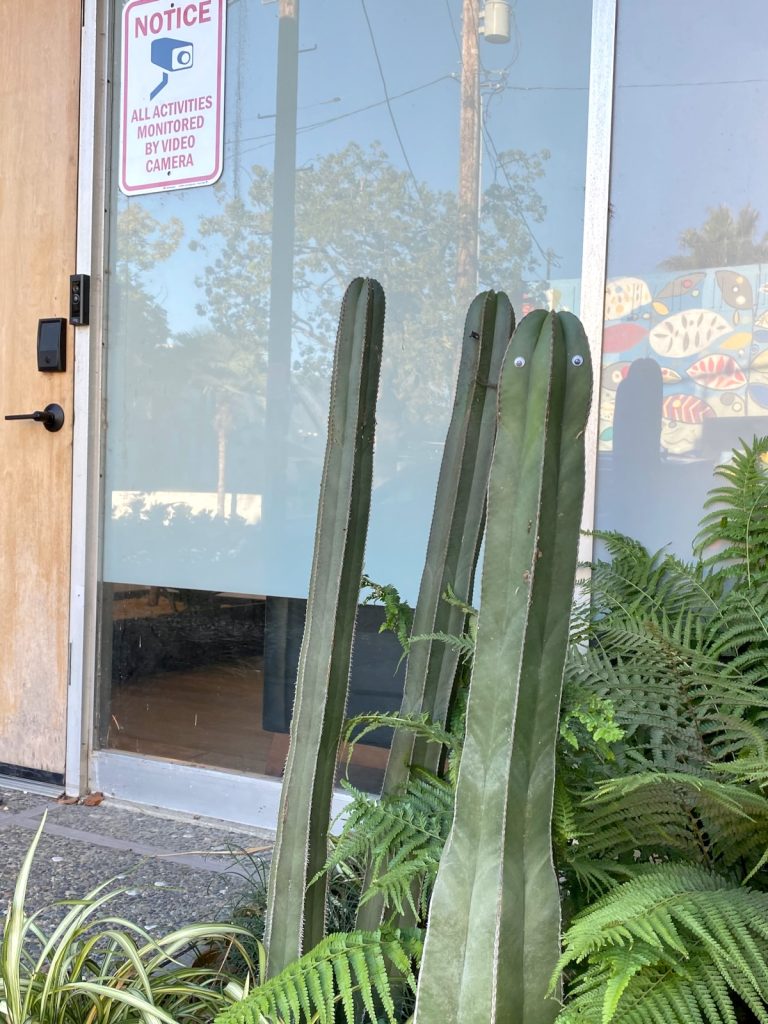
Meandering allows you to pop into places you might normally pass right by. I had chats with the staff at both visitor centers: at the one on State, we talked about how the Starbucks next door will affect the building’s sewer line; at the one on Cabrillo, we discussed the building’s origin at 214 State Street (where it was the Larco Fishmarket Building, constructed in 1911 and moved in 1988), and they showed me an old photo.
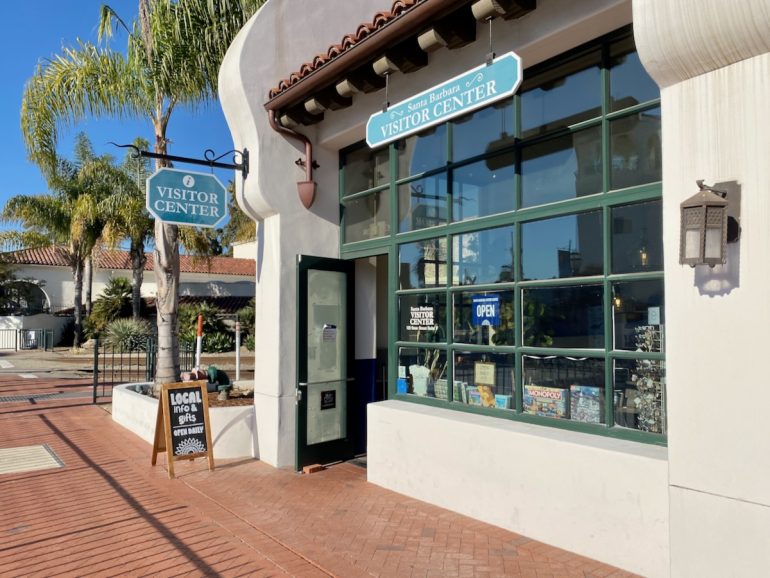
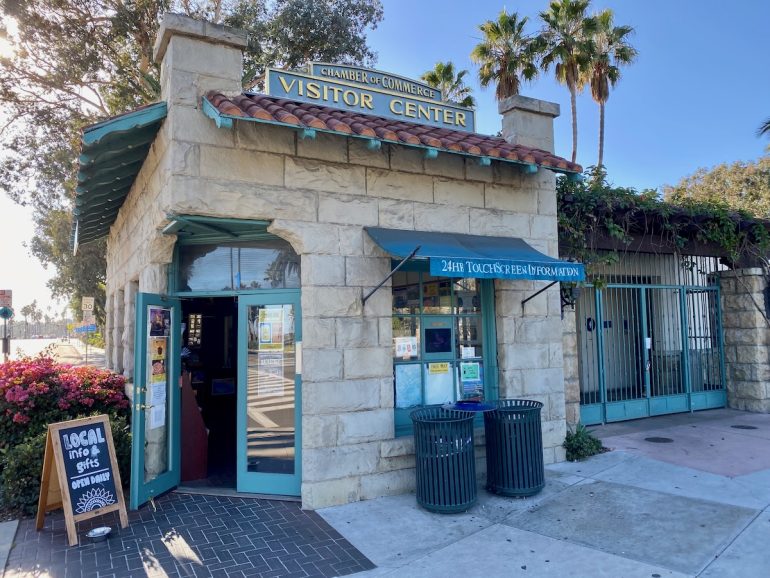
 That reminds me: I need to follow up on my threat to make two friends join me on a surrey ride….
That reminds me: I need to follow up on my threat to make two friends join me on a surrey ride….
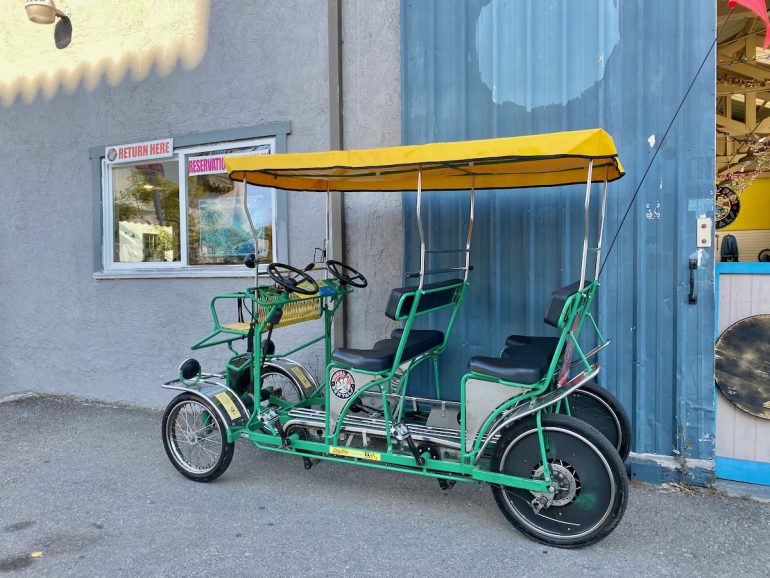 OK, we’ve postponed the inevitable for as long as possible. A lot of change is headed toward the Funk Zone. There are three prominent vacancies: the 10,000-square-foot former MichaelKate Contemporary Furniture building, on the market for $7.95 million; Metropulos Fine Food Merchant, which the owners have suggested someone may yet buy and reopen; and the 14,000-square-foot 25 E. Mason, which Sonos left for Goleta.
OK, we’ve postponed the inevitable for as long as possible. A lot of change is headed toward the Funk Zone. There are three prominent vacancies: the 10,000-square-foot former MichaelKate Contemporary Furniture building, on the market for $7.95 million; Metropulos Fine Food Merchant, which the owners have suggested someone may yet buy and reopen; and the 14,000-square-foot 25 E. Mason, which Sonos left for Goleta.
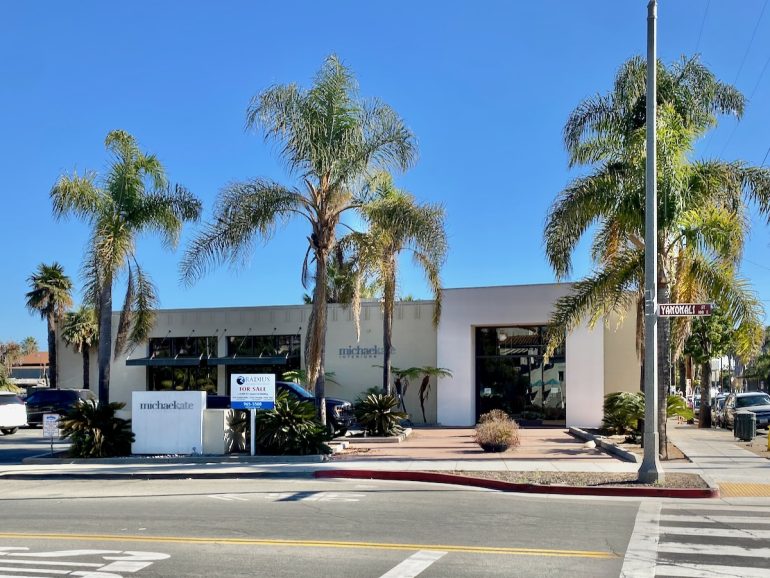
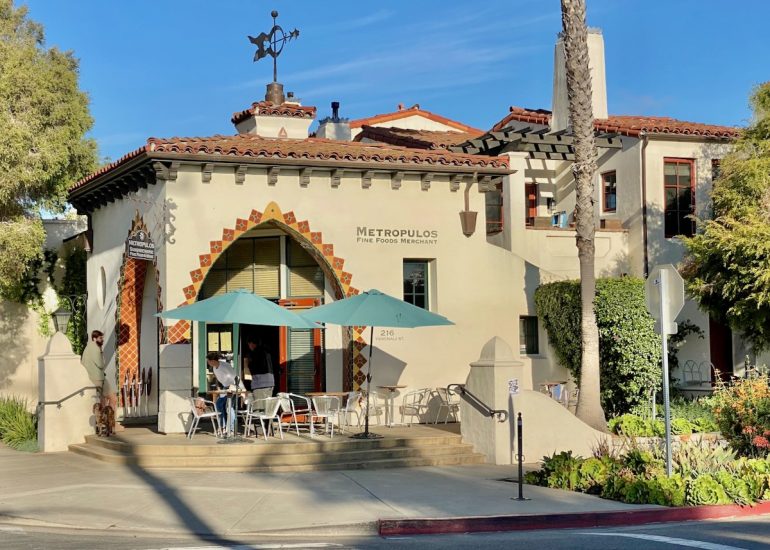
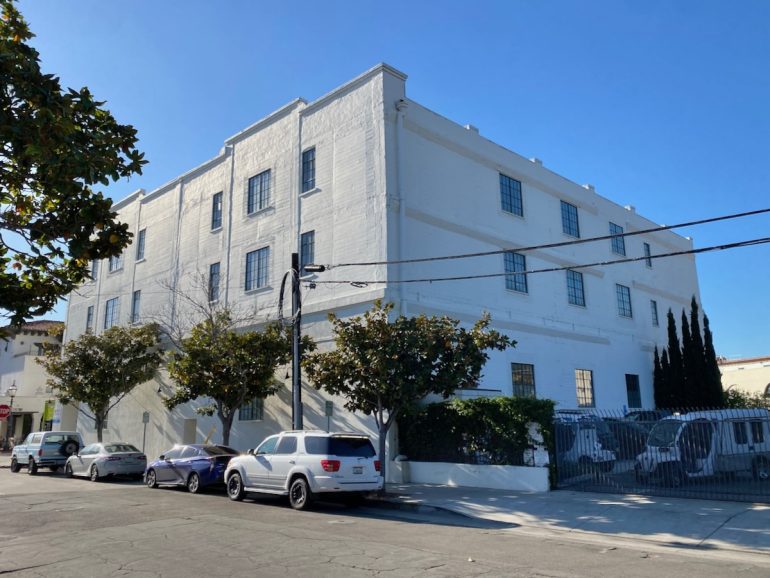 Looming larger are the four massive developments in the permitting process. Here’s the description for 35 Anacapa, at the southwest corner of Mason, from when it went back in front of the city’s Architectural Board of Review: “The proposed building includes two 6-room small hotels (total of 12 hotel rooms, ±300 square feet each), hotel lobby/amenities/back-of-house, and other commercial services including: corner market/bodega, restaurant, and tasting rooms. A total of two residential manager’s units (±600 square feet each) will be provided for the two hotels.”
Looming larger are the four massive developments in the permitting process. Here’s the description for 35 Anacapa, at the southwest corner of Mason, from when it went back in front of the city’s Architectural Board of Review: “The proposed building includes two 6-room small hotels (total of 12 hotel rooms, ±300 square feet each), hotel lobby/amenities/back-of-house, and other commercial services including: corner market/bodega, restaurant, and tasting rooms. A total of two residential manager’s units (±600 square feet each) will be provided for the two hotels.”
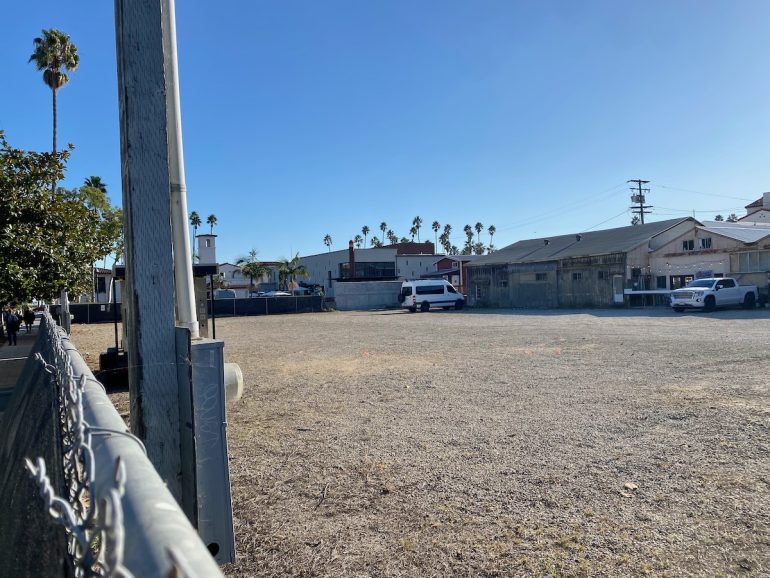
 The developers of 101 Garden Street (at the southwest corner of Yanonali, where all the shipping containers are) proposed a 250-room hotel (120 standard rooms and 130 extended-stay), but the city’s Planning Commission balked, demanding some housing even though the Cabrillo Plaza Specific Plan of 1983 included hospitality as a possible use for the lot. The developers said they’ll return with a revised design.
The developers of 101 Garden Street (at the southwest corner of Yanonali, where all the shipping containers are) proposed a 250-room hotel (120 standard rooms and 130 extended-stay), but the city’s Planning Commission balked, demanding some housing even though the Cabrillo Plaza Specific Plan of 1983 included hospitality as a possible use for the lot. The developers said they’ll return with a revised design.
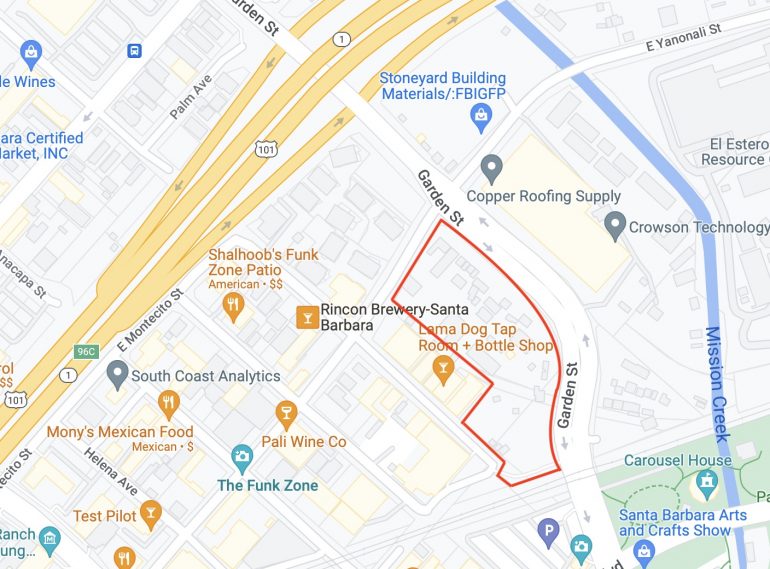 Last time I mentioned SOMOfunk, a mixed-use development (155 apartments and 18,000 square feet of commercial space) proposed for the full block bordered by Yanonali, Santa Barbara, Mason, and Gray, someone commented that they had heard the plan was pulled. I tried asking the developer for an update, to no avail. While the details may change, I’m confident that such a valuable lot will inevitably get developed.
Last time I mentioned SOMOfunk, a mixed-use development (155 apartments and 18,000 square feet of commercial space) proposed for the full block bordered by Yanonali, Santa Barbara, Mason, and Gray, someone commented that they had heard the plan was pulled. I tried asking the developer for an update, to no avail. While the details may change, I’m confident that such a valuable lot will inevitably get developed.
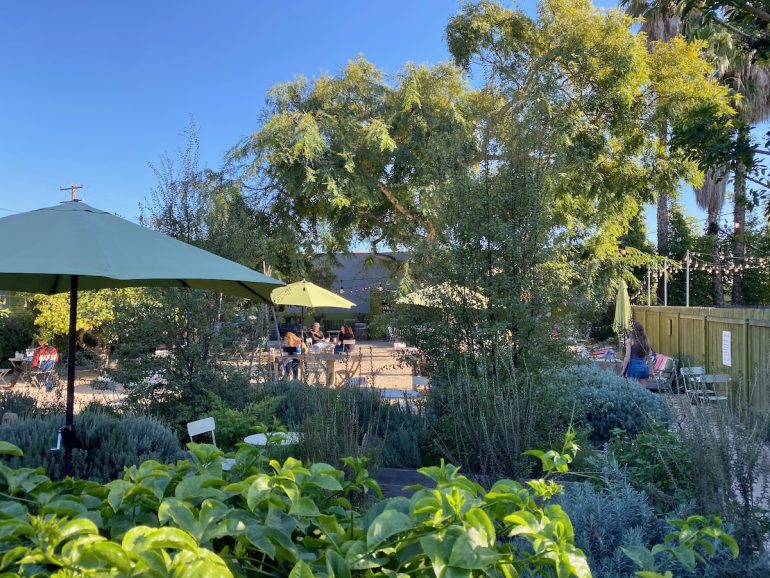
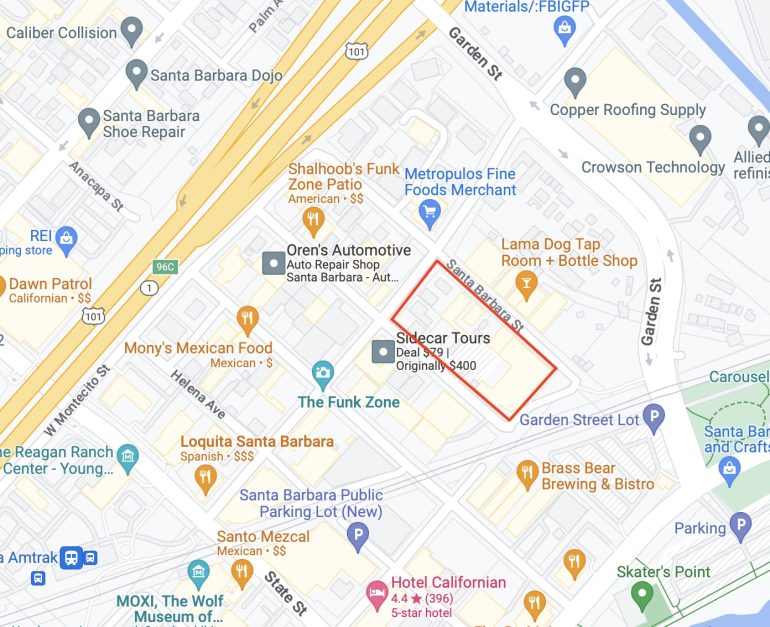 And while not technically in the Funk Zone, but sure to affect it, there’s also the outpost of Culver City’s Platform coming to the southeast corner of Garden Street and Highway 101 (currently home to Stoneyard Building Materials). The developer, Runyon, said we can expect “unique independent boutiques and great local chef/restaurateurs.”
And while not technically in the Funk Zone, but sure to affect it, there’s also the outpost of Culver City’s Platform coming to the southeast corner of Garden Street and Highway 101 (currently home to Stoneyard Building Materials). The developer, Runyon, said we can expect “unique independent boutiques and great local chef/restaurateurs.”
 Ten years from now, the Funk Zone will feel markedly different. Whether that will be good or bad, I have no idea. But whenever I start to feel myself worrying too much about the future, at least in regard to Santa Barbara, I remind myself to surf the change. It’s coming whether you like it or not.
Ten years from now, the Funk Zone will feel markedly different. Whether that will be good or bad, I have no idea. But whenever I start to feel myself worrying too much about the future, at least in regard to Santa Barbara, I remind myself to surf the change. It’s coming whether you like it or not.
················
Walk With Me…
Downtown Santa Barbara
• The Upper Upper East Is Busting Out All Over
• The Presidio: In the Footsteps of Old Santa Barbara
• Brinkerhoff, Bradley, and Beyond
• Mixing Business and Pleasure in East Beach
• It’s Only Milpas Street (But I Like It)
• The Haley Corridor Is Keeping It Real
• The Small Pleasures of Bungalow Haven
• Is There a Better Neighborhood for a Stroll Than West Beach?
• E. Canon Perdido, One of Downtown’s Best Strolling Streets
Eastside
• Where the Eastside Meets the Lower Riviera
Oak Park / Samarkand
• The Side Streets and Alleyways of Upper Oak Park
• The Small-Town Charms of Samarkand
The Riviera
• Scaling the Heights of Las Alturas
• High on the Lower Riviera
Eucalyptus Hill
• On the Golden Slope of Eucalyptus Hill
• Climbing the Back of Eucalyptus Hill
San Roque
• Voyage to the Heart of the San Roque Spider Web
TV Hill / The Mesa
↓↓↓ Walking in Circles in Alta Mesa
• West Mesa Is Still Funky After All These Years
• A Close-Up Look at TV Hill
Hidden Valley / Yankee Farm / Campanil
• Campanil is a Neighborhood in Flux
• An Aimless Wander Through Hidden Valley
• The Unvarnished Appeal of Yankee Farm
Hope Ranch / Hope Ranch Annex / Etc.
• A Country Stroll on El Sueno Road
Montecito
• Out and Back on Ortega Ridge
• The Heart of Montecito Is in Coast Village
• Quintessential Montecito at Butterfly Beach
• Once Upon a Time in the Hedgerow
• Where Montecito Gets Down to Business
• In the Heart of the Golden Quadrangle
• Up, Down, and All Around Montecito’s Pepper Hill
• Montecito’s Prestigious Picacho Lane
• School House Road and Camphor Place
Summerland / Carpinteria
• A Stroll in the Summerland Countryside
• Admiring the Backsides of Beachfront Houses on Padaro Lane
• Whitney Avenue in Summerland
Goleta / Isla Vista
• A Tough Nut to Crack in Goleta
• Where the Streets Have Full Names
• The Past Is Still Present in Old Town Goleta
• Social Distancing Made Easy at UCSB
················
Sign up for the Siteline email newsletter and you’ll never miss a post.


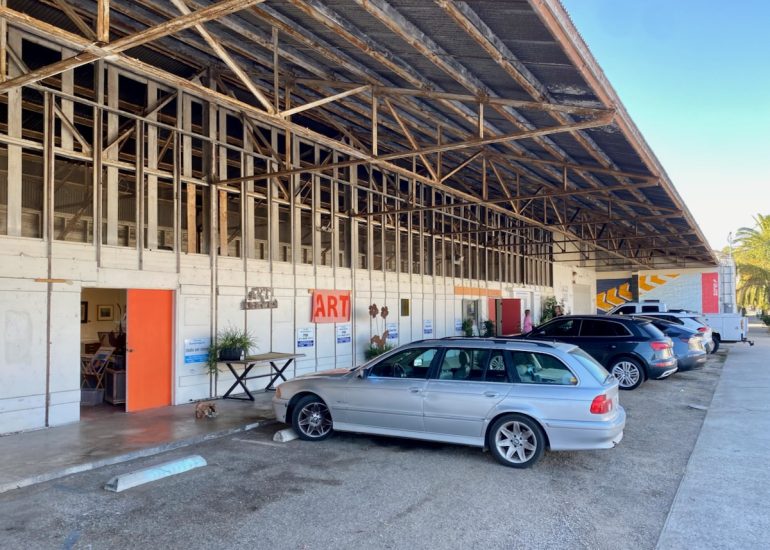
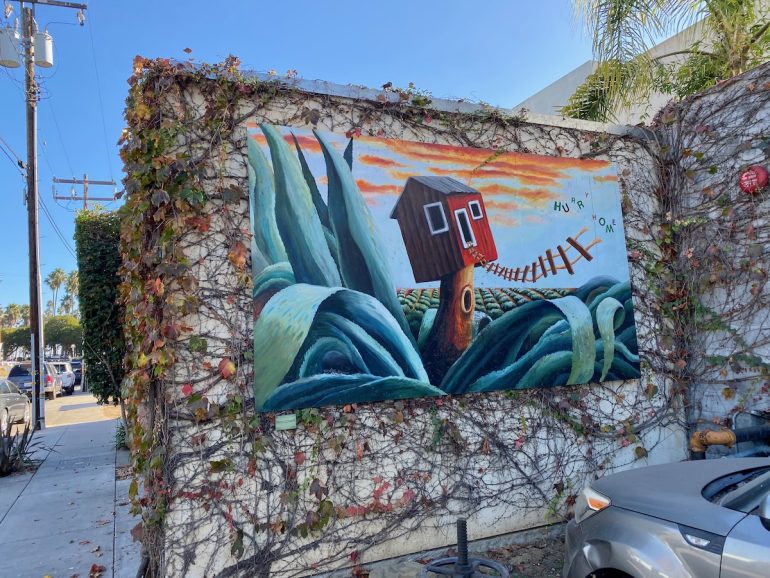
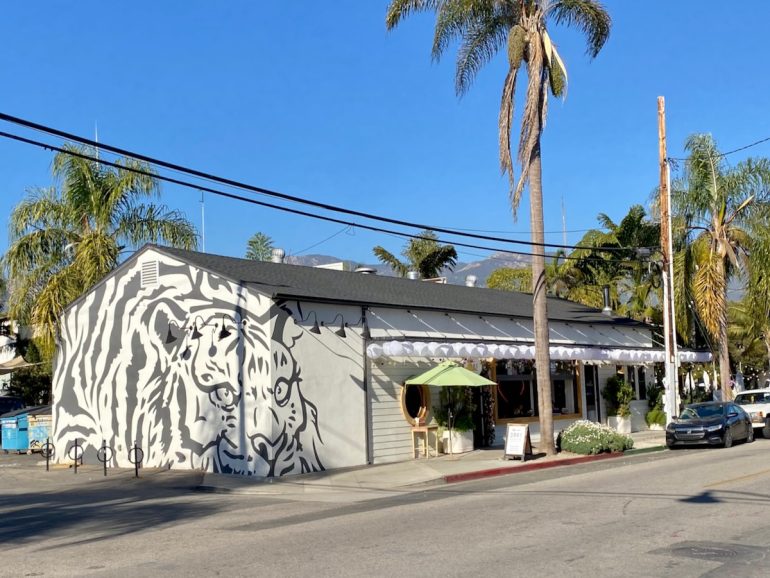
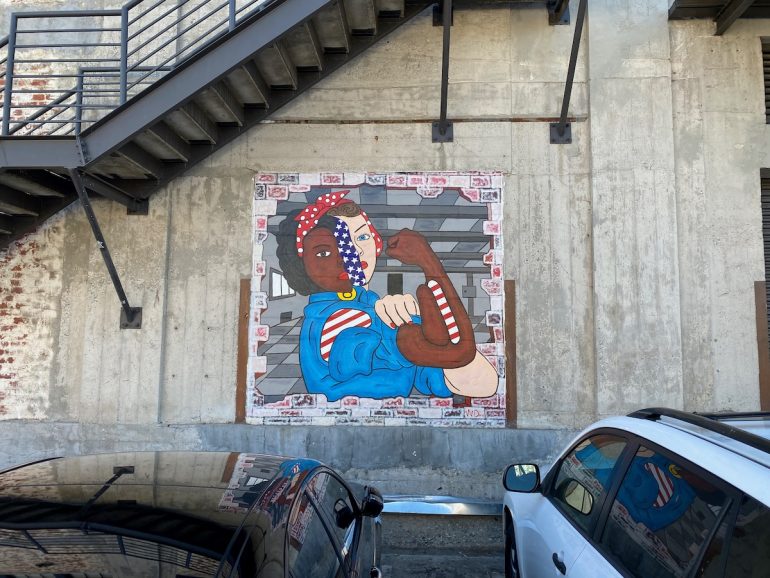
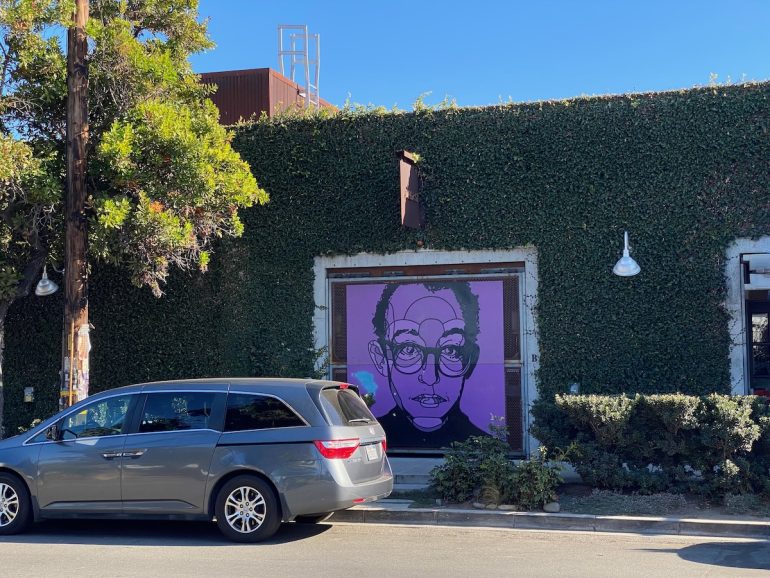
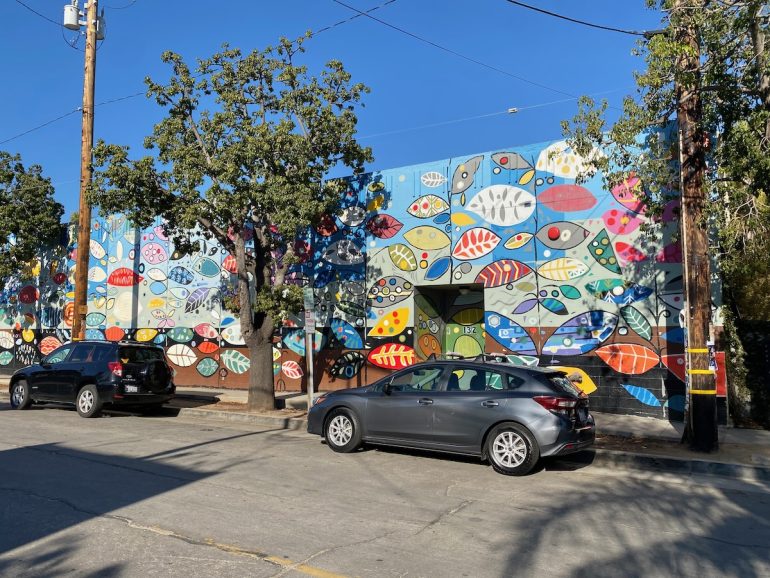
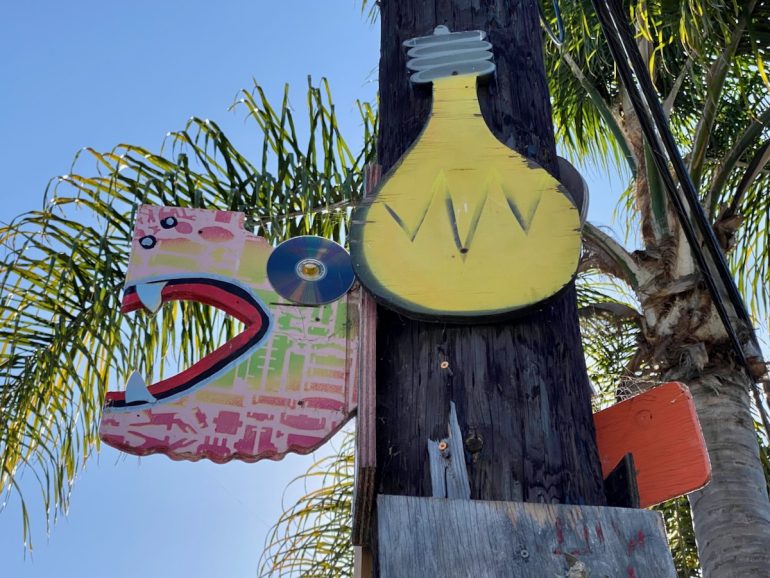
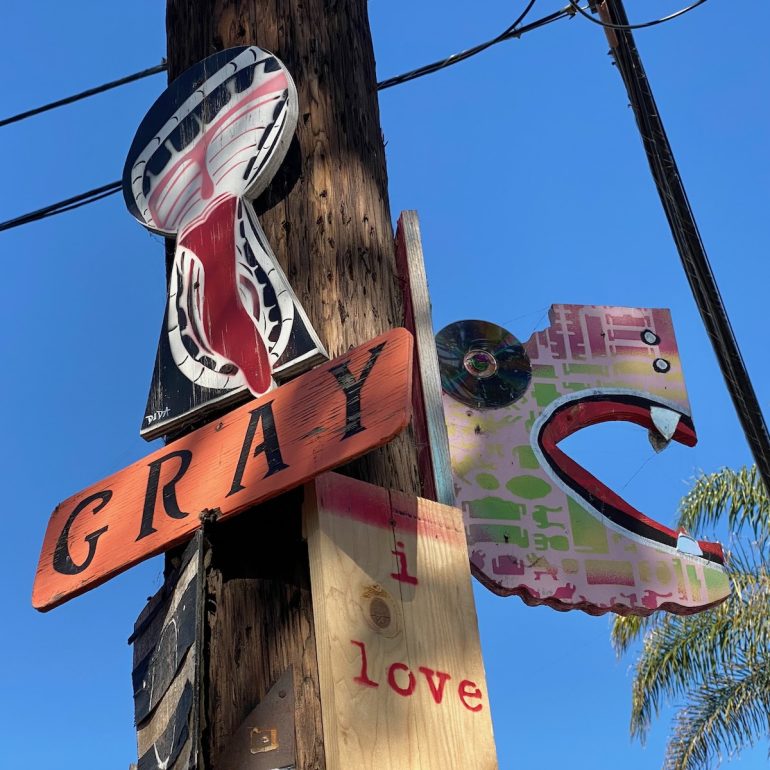
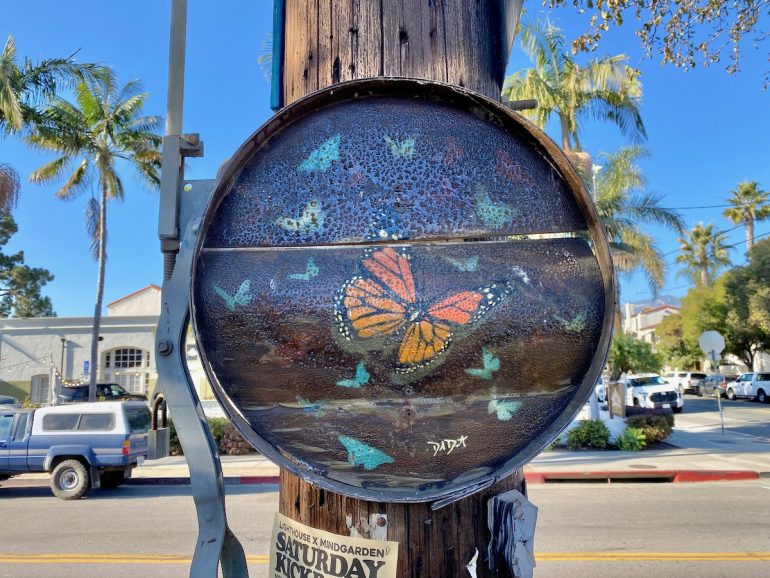
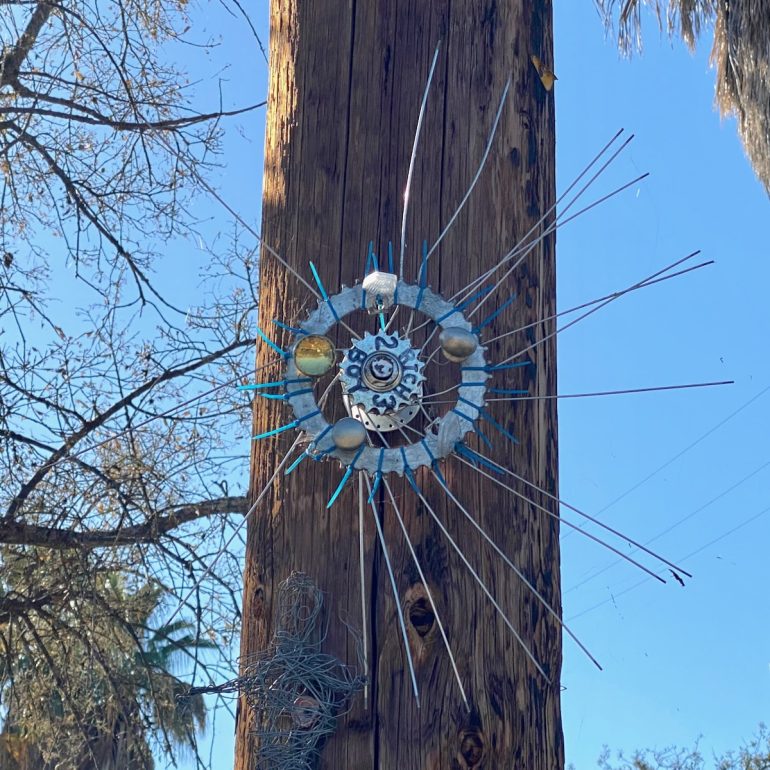
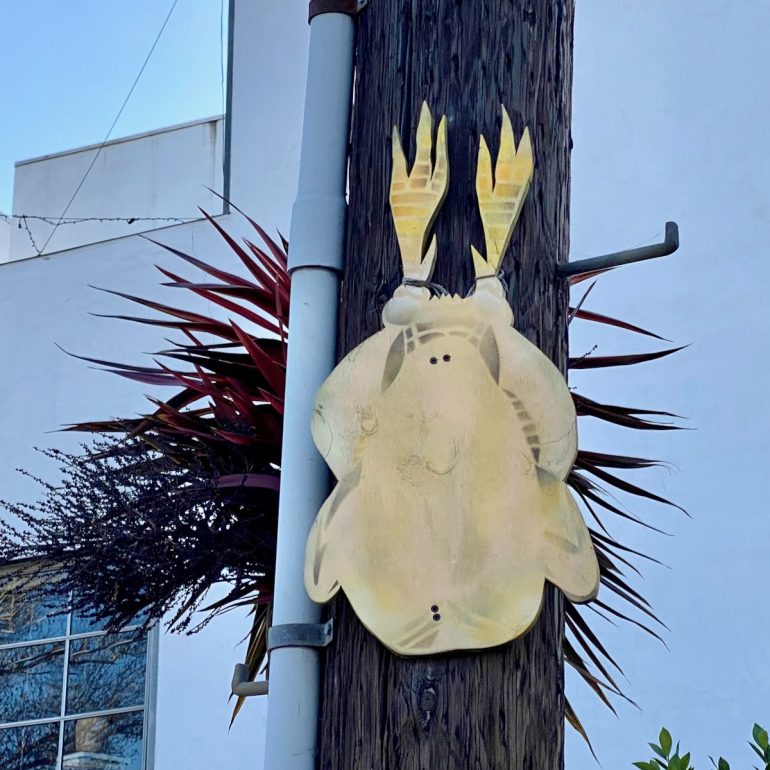
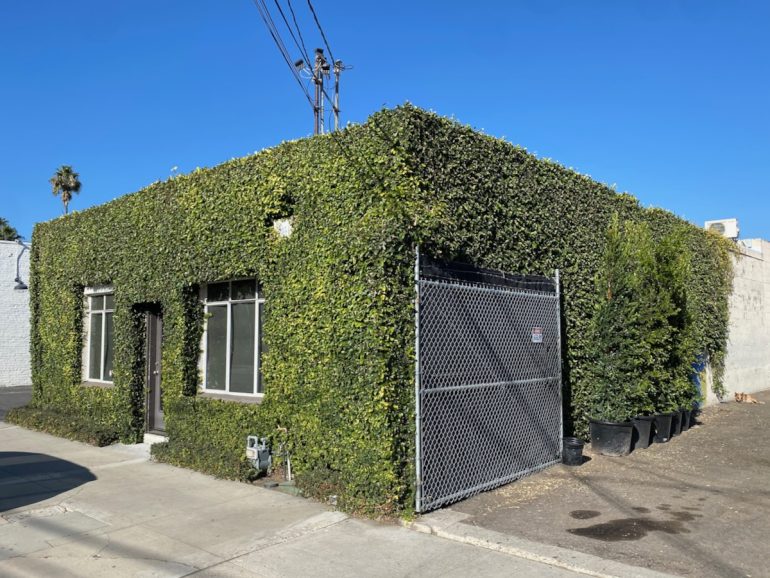
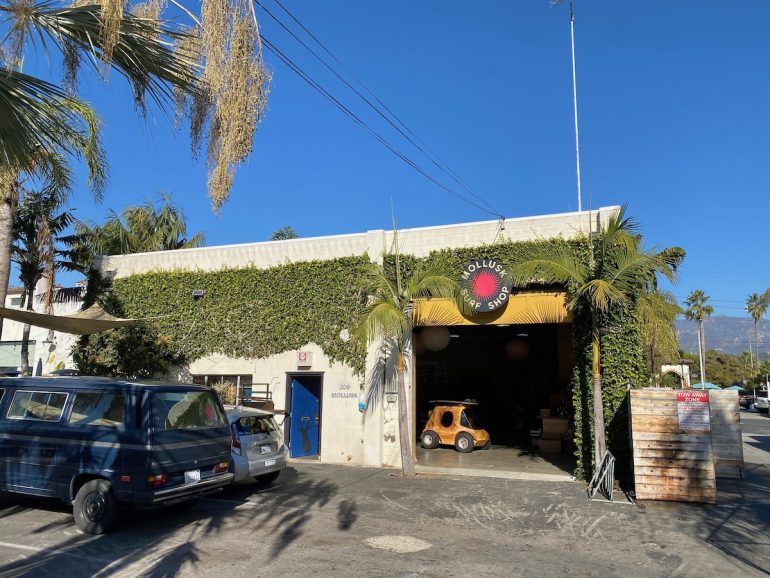
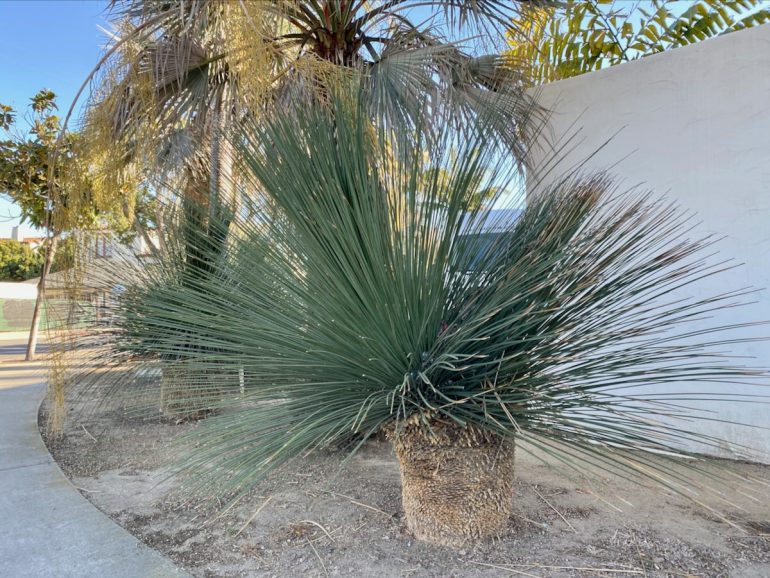
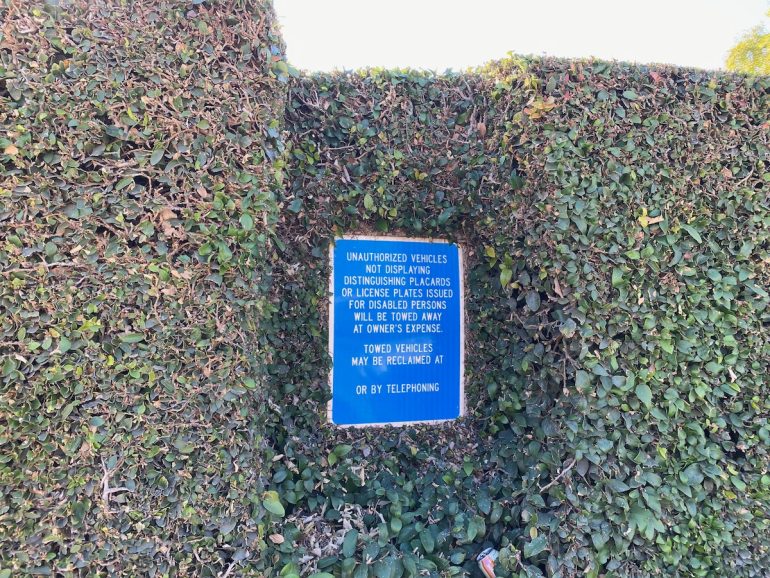
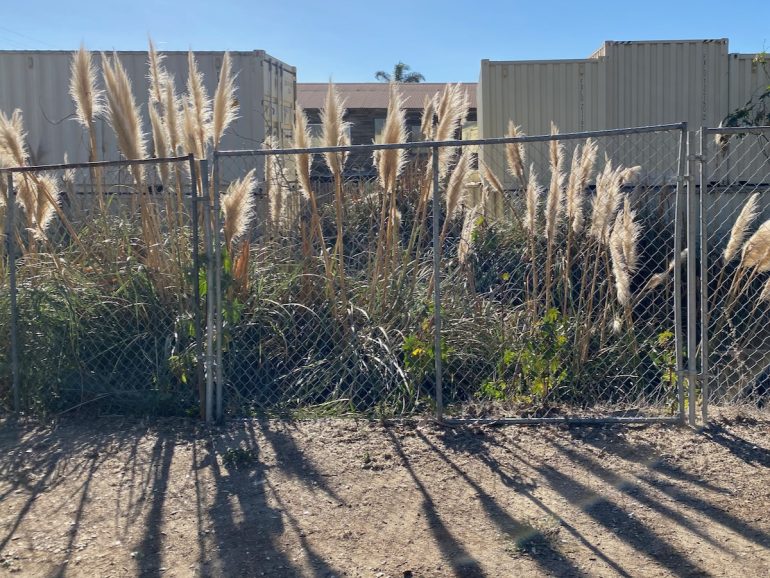


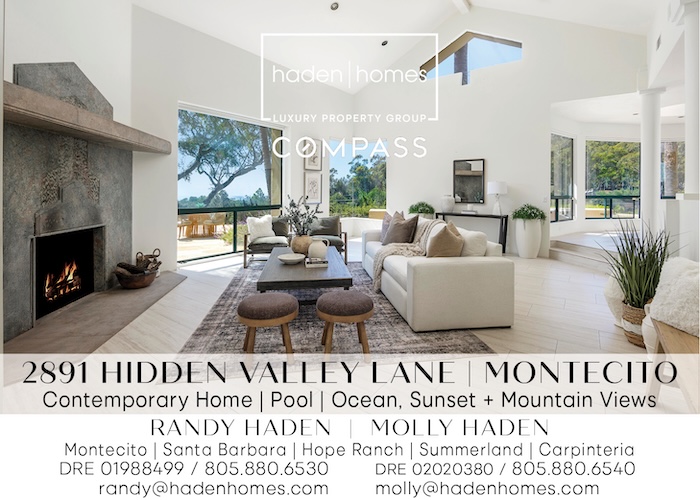
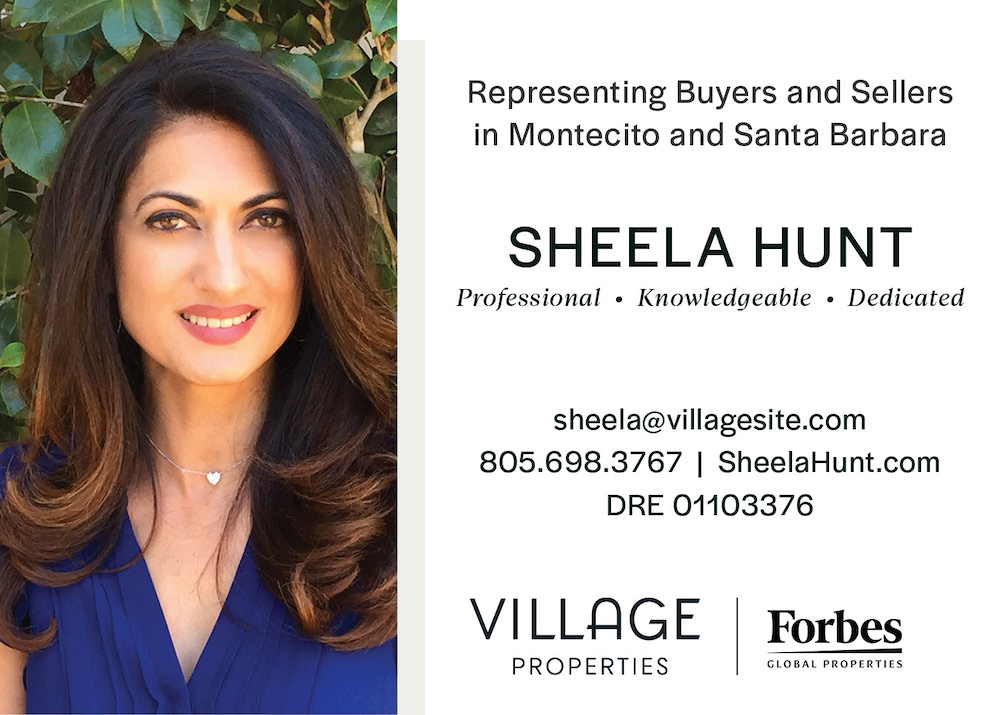
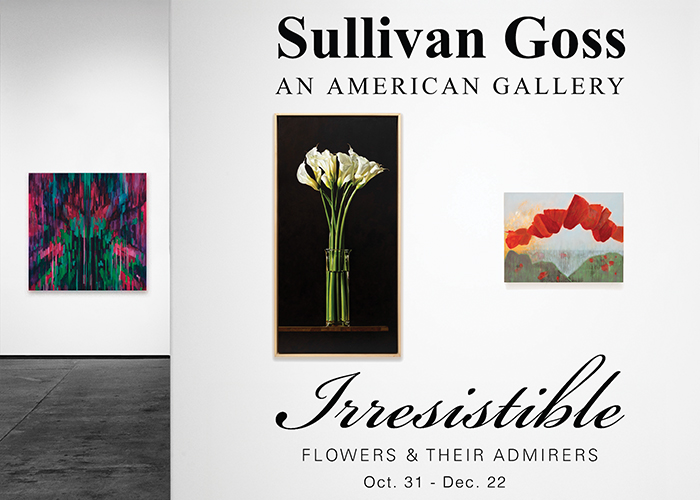

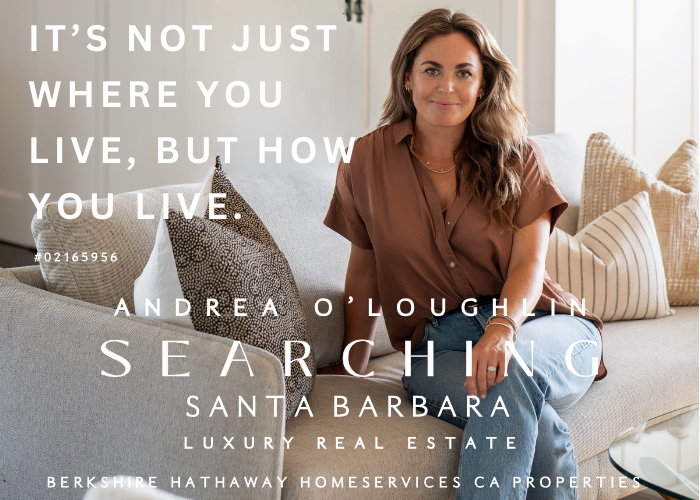
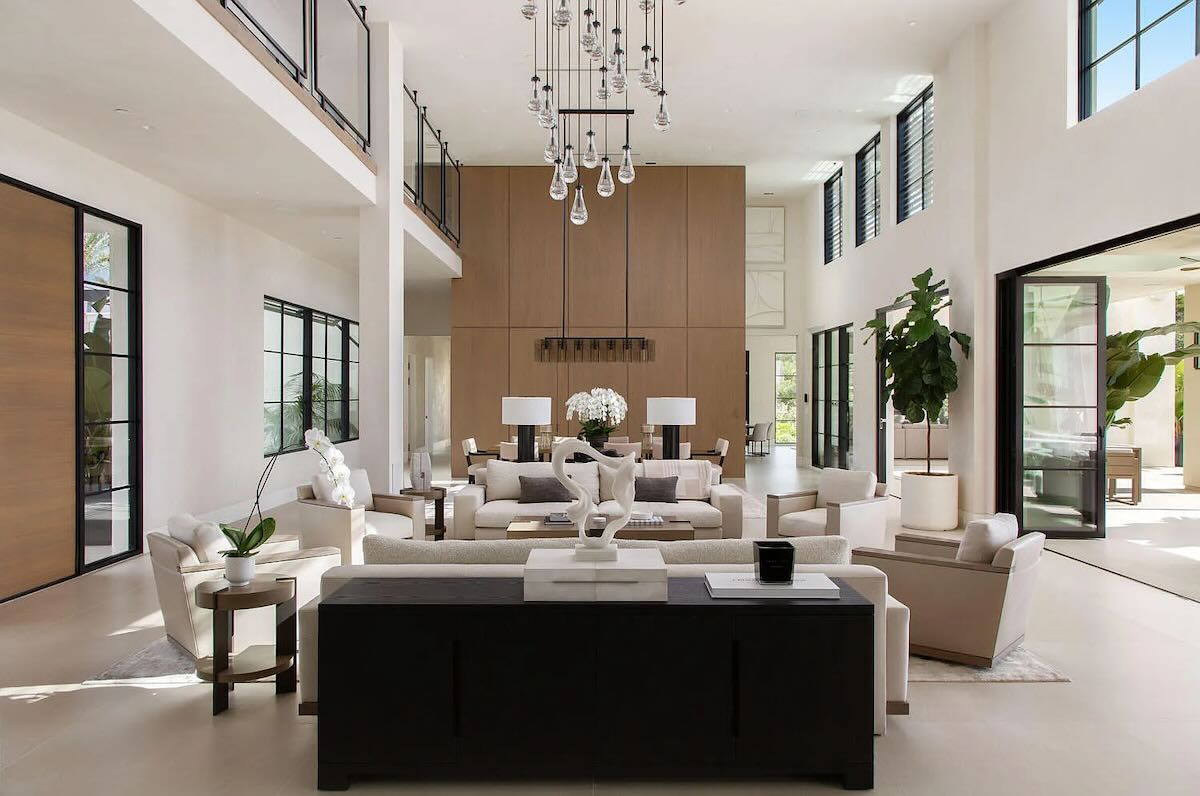


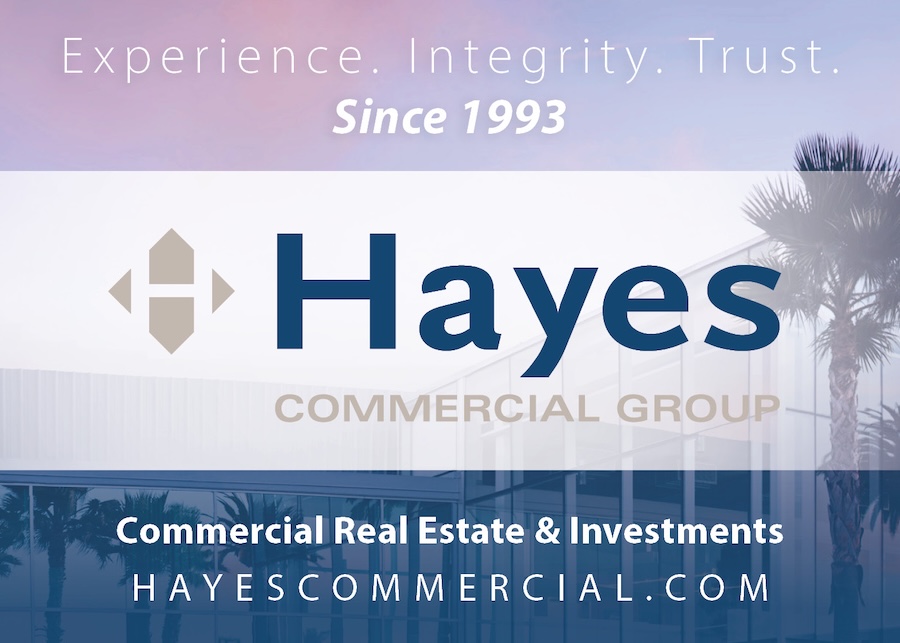
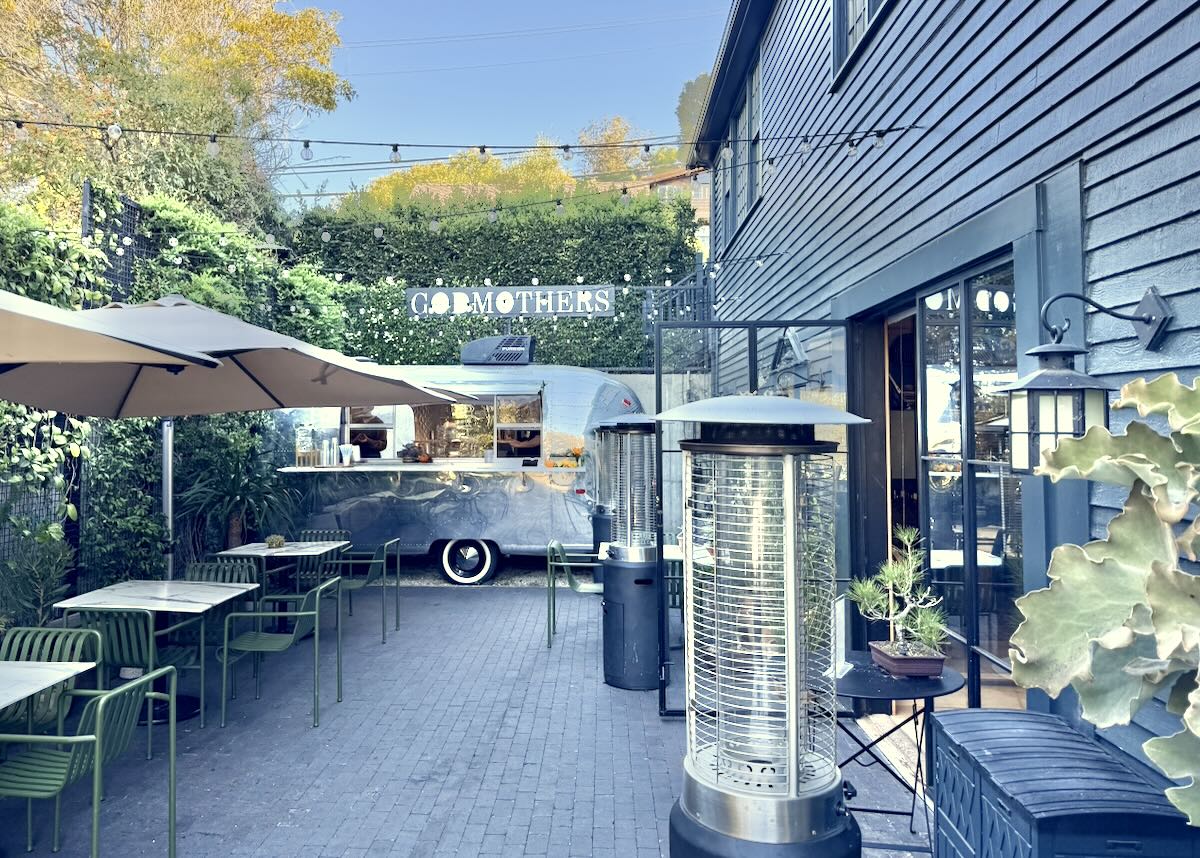
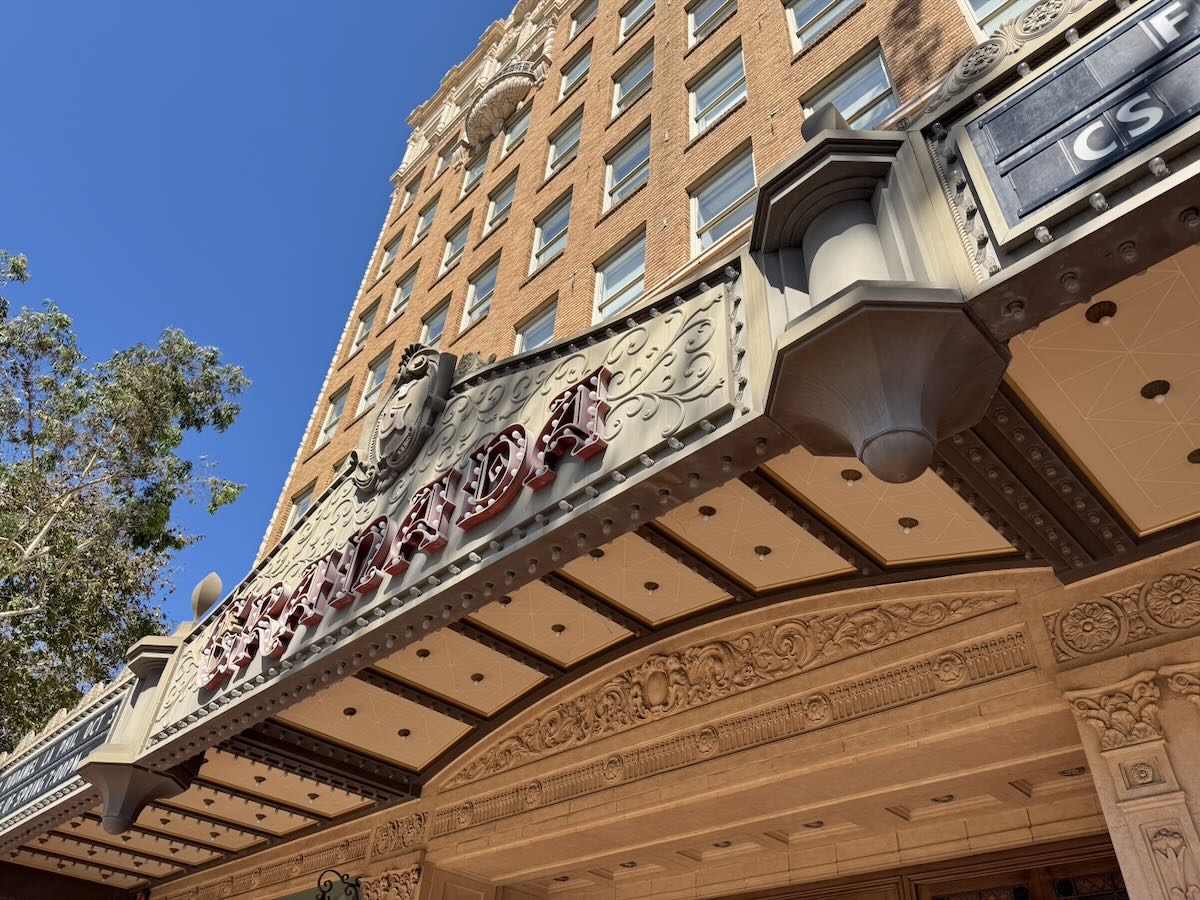

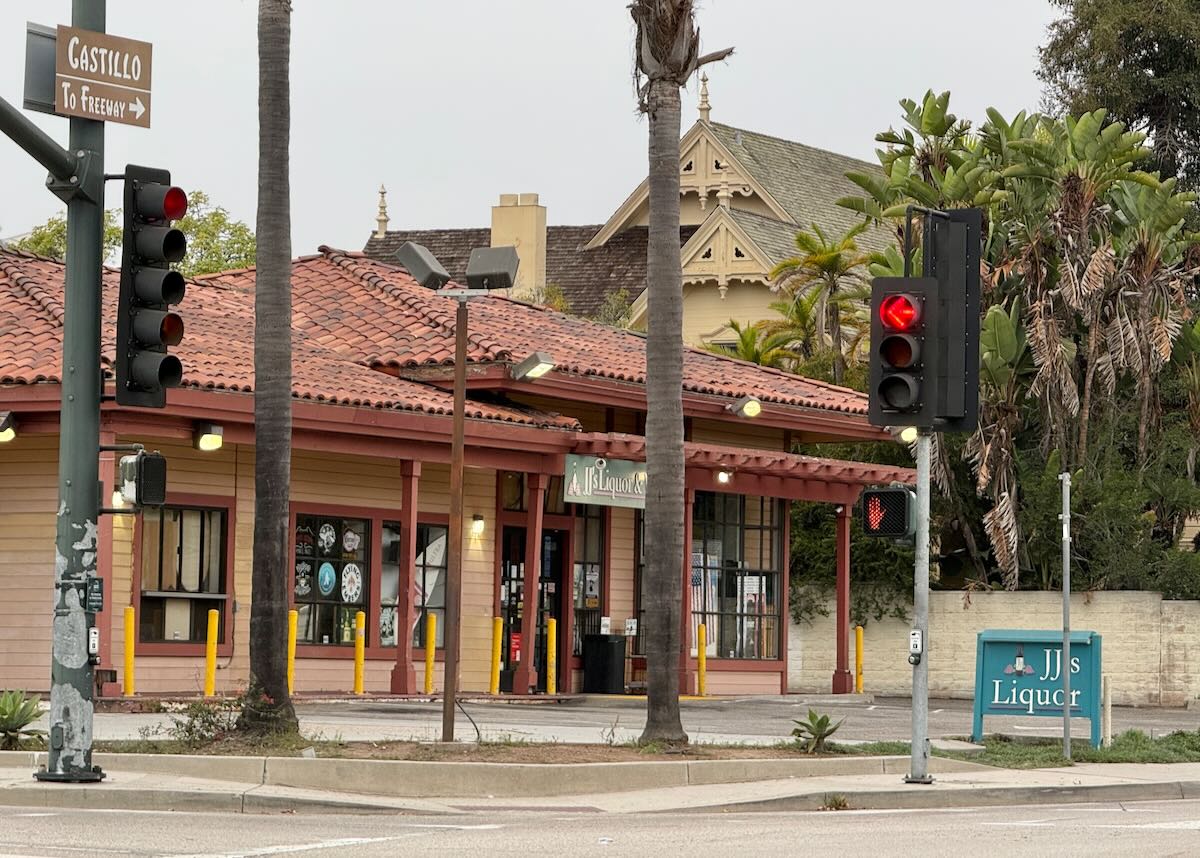

Born and raised here, the Funk Zone had so much potential to be something special.
Sherry Villanova / Acme group really did the work to turn it into a yuppie village.
I’m really surprised Covid & higher interest rates didn’t nuke Acme’s ponzi scheme of a business.
At least the Rhino still remains… /s
???????? ???????? ????????
Well, Alex, great people have been surprising small people for many generations. Best for all if you stay in the Spearmint Rhino.
Used to go down to the funk zone a lot in the early years of it’s big change. Ramen at the old Pearl Social (can’t remember the name) and loved Tyger Tyger and drinks at Lama Dog and good food at the Nook. We only very occasionally go down now for a cappuccino at Dart and to sit in the lovely garden across the street. The Green house next to the garden is still an studio for a couple of artists, I believe. Anyway, too crazy now on the weekends-but that’s fine and good for all the stores and restaurants down there.
When I originally took the space @julesbytheseasb, in the Quonset hut, we were told we had three years before it was all going to be developed. That was in bay of 2020.
I have loved every minute in this funky space and neighborhood. We thought our days were numbered and I have been grateful for all the time I have had in this magical space. We do get the good news and have officially signed a two-year extension so the Funk Zone studios will be around at least until the end of 2025! Jules, by the sea, just Conti, leather goods, Lancaster wood prints.
I also agree with you without Acme. I’m not sure what the funk zone would be. Great write up. Thank you.!
Great tour and very informative. Good of you to cover the potential massive developments in the pipeline – maybe SOMOFunk and others are re-evaluating and will be back with a 80ft+ design in exchange for a couple dozen affordable units. Now the City has rolled over on the issue, why limit your designs to a measly four stories.
Why Sitelinesb can’t offer the reader magnification with a finger spread I have no idea.
The empty Avis building reminds me, there was for a time an idea to fine owners of long-time vacant storefronts. What happened?
Because one of the top reasons more businesses, particularly local/small businesses, aren’t moving into these vacancies isn’t the rent, it’s the excessive governmental regulation. More government intervention won’t help this.
…And, of course, the new Shake Shake, going in right where Santa Barbara Winery used to be, at the corner of Yanonali & Anacapa (thanks for destroying the Funk, new (local) landlord!
Do you mean Shake Shack? Where did you hear that?
I think the purpose of the pedestrian gates at the railroad crossing is to let pedestrians get off the tracks if they’re on them when the train approaches. The barrier that comes down has a small part that blocks the sidewalk, and then the pedestrian gates are set up to open outward, so if you’re between the barriers when they start coming down, you move to the side and go out the gate.
Of course, it’s silly, because you can still just open the gate from the outside and go through. There’s nothing stopping you (except a feeble “do not enter” sign). But I think what I described is the intent.
Last year I watched the folks from Visit Santa Barbara give a presentation to the city council. They did a survey of tourists, asking what are the top things to do. The top two were the FZ and State street with the FZ at 49% and State st at 48%. I found that very interesting since the FZ gets no help from the city, no $250k during Covid, no $800k study to chart it’s future, no $55k for painted bike lanes. . . I personally like the funk of sidewalks that are sometimes dirt, or Gray ave with no sidewalks or curbs. Yes the funk is disappearing with new projects but that’s life. As far as why some lots are still empty it might have to do with the city using the area as a dump. Who knows what’s under the surface of those lots, it will be interesting to see when the developers break ground.
Excellent read. I just passed this onto a friend who was doing a little research on that. He actually bought me lunch since I found it for him! Thus let me rephrase: Thanks for lunch!
Great post. I am a normal visitor of your web site and appreciate you taking the time to maintain the nice site. I will be a frequent visitor for a long time.
The photo of the sad little building on Helena Street with the boarded up window and black car in the foreground used to be one (and arguably the most lively) of the four gay/lesbian bars in Santa Barbara, long before the term ‘funk zone’ existed – The Pub. The long stoplights to cross the freeway back then was worth it to get to this place. It was Wildcat before Wildcat, and crazy dancing fun.
I worked there during most of the 80’s as a bartender and one of the DJ’s. It was so much fun when that dance floor was packed every weekend. I miss the place immensely, all the good times and so many people that we lost and those who lost touch. It wasn’t huge like Studio One in West Hollywood or anything great like that but it certainly packed a big punch in a tiny spot. To all who remember I hope you had as much fun as we did.
I’ve tried to read this three times. This is a photo dump, not a story with a coherent point to make. Please, what are you precisely trying to say?
Wonderful photo essay. Areas like the Funk zone thrive because of all the small but distinctive elements of art, shadow, incongruity, layering, etc. This is what developers miss when new projects are built. Even when developers try, they miss the organic buildup of vistas that acccumulate over time.
Great visuals today, Eric…. you really captured the spirit of the FZ as well as a good synopsis of what’s there and what’s to come.
This area prompted the acquisition of a stake in the Zone. The utility pole Art has ebbed and flowed but is always appreciated.
101 Garden was stated to be at an economic risk when money cost was 2% points lower than today. Not a huge fan but they got the tablecloth pulled out from under the plans.
131 E Mason- the full block proposal has just kept banging on the housing shortage to make a questionably thought out proposal acceptable. The parking plan was silly. As far as I know the lots are not merged save by ownership.
The “platform” at the stone yard when stripped of landscaping has the charm of a Fallujah style urban warfare military exercise facility. With this and the similar shopping refit near the bird lagoon… is there a market for this space? If State street was leased full up, OK.
My question of the two hotels in one corner development is two managers for so few units? Curious.
There will be change, may the cost of money rationalize the development.
No mention of the fish and meat market on Helena, where’s the love?
You might be interested in taking a walk out las canoas rd. or mission canyon . If you write about Las Canoas rd.there is a book called Canyon Voices which gives a lot of background stories